ELT RESEARCH IN ACTION 2022
—

Working together towards shared goals
Proceedings of the third ELTRIA conference
Online, 22-23 April, 2022

Published by IATEFL
2 – 3 The Foundry
Seager Road
Faversham
Kent ME13 7FD
UK
Copyright for whole publication
© IATEFL 2022
IATEFL retains the right to reproduce part or all of this publication in other publications, including retail and online editions. Contributions to this publication remain the intellectual property of the authors. Any requests to reproduce a particular article should be sent to the relevant contributor and not IATEFL. Articles which have first appeared in IATEFL publications must acknowledge the IATEFL publication as the original source of the article if reprinted elsewhere.
Disclaimer
Views expressed in this publication ELT Research in Action: Working Together Towards Shared Goals are not necessarily those of the editor(s), of the IATEFL Research SIG, of IATEFL, its staff or trustees.
ISBN 978-1-912588-46-6
Edited by Jessica Mackay & Thomas Wogan
Cover design and book layout by Leonel Brites
Cover Photography: Casa Jeroni Granell
- Catalan Modernisme (1902, Jeroni F. Granell), by Mutari (image on Public Domain).
The International Association of Teachers of English as a Foreign Language was founded in 1967. It is registered as a charity (1090853) and registered as a company in England (2531041). For further information about IATEFL, please see the IATEFL website: http://iatefl.org. For further information about the Research Special Interest Group, please see the ReSIG website: http://resig.weebly.com.
ELT RESEARCH IN ACTION 2022

—
Working together towards shared goals
———————————————
Proceedings of the third ELTRIA conference
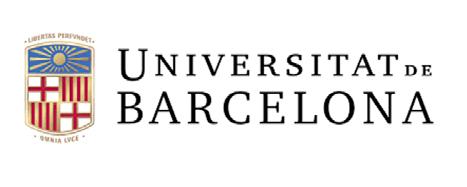
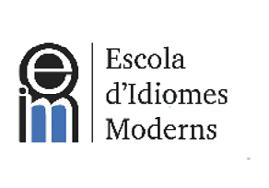
Online, 22-23 April, 2022
Edited by Jessica Mackay
Thomas Wogan
———————————————
Preface by Richard
J Sampson
07 Preface
Richard J. Sampson
11 Acknowledgements
13 Notes on contributors
17 ELT research and practice in a changing world
Jessica Mackay
SECTION 1· Classrooms in transition
Developing and adapting to changing conditions
23 Learning languages in Higher Education following the Covid-19 pandemic: student perspectives
Jean M. Jimenez and Ida Ruffolo
33 How does feedback work in an online exam preparatory course? Insights from a teacher research project
Anna Soltyska
41 Following the footprints of online ESP learning: action research
Amalia Babayan
SECTION 2 · Beyond the classroom: Maximising learning opportunities
47 Using Moodle increases older adult language learners’ autonomy and motivation
Jodi Wainwright
51 The timeliness of written corrective feedback in a classroom WhatsApp group: A comparison of two feedback modalities and learners’ perceptions
Bridget Murphy
59 Teacher-talk and Facebook: An enquiry into pedagogical and methodological expectations of GenZ EFL learners in Germany
Kevin F. Gerigk
65 The use of captioned-video viewing to support the development of L2 reading skills
Daniela Avello and Carmen Muñoz
71 Views from the field: Extract from an Interview with Professor Brian Tomlinson
Brian Tomlinson and Jessica Mackay
5
Contents
SECTION 3 · Views from within: Learners’ and teachers’ perspectives on classroom practices
81 Learner-initiated translanguaging: How do Japanese EFL learners initiate interaction?
Seiko Harumi
85 Research into L+ study emotions: Practitioner-researcher suggestions for future directions
Richard J. Sampson
93 Motivated to Get an “A” Katherine L. Kiss
97 Language Teachers’ Perceptions of Classroom Action Research Stephanie King
103 Teachers’ beliefs about CLIL limitations: a case of one Catalan secondary school Anastasia Lovtskaya
109 Positioning language teachers’ professional knowledge in participatory research: Reflections from the front Diane Potts
6
Contents
Preface Richard J.
Sampson
intheproceedingsof the second ELTRIA conference, Graham Hall (2020) commented that “in our busy daily working lives, it is often difficult to ‘take time out’ in order to think about why we do what we do” (p. iv – emphasis added). As I write, we appear to be approaching the latter stages of a pandemic that has wreaked substantial damage to health and welfare around the world and put significant strain on basic economic and educational aspects of society. Wildfires tear through various parts of the world and days with temperatures over 40 degrees Celsius become less of an anomaly. While “guerilla” rain events cause devastating flooding, drought plagues other areas. At the same time, humans seem increasingly polarized in our views, even as we strive to become more inclusive of diversity and aware of historical inequalities. At this juncture, it may indeed be fruitful to consider the “why” of English Language Teaching Research in Action.
In this preface to the third installment of the ELTRIA conference, I would thus like to unpack a little some perspectives on the conference theme: Working together towards shared goals. As a practitioner-researcher, I conduct enquiries with students into our practices in our contexts of learning. The first word from the conference theme upon which I have chosen to focus – “together” –thus for me primarily implies teachers and learners. Over the years, I have found small-scale classroom research to offer learning opportunities for both myself and my students above and beyond the language study in which we are primarily involved. Naturally, “together” might equally imply connections between learners, teachers, teacher-educators, graduate students and academics.
ELT RESEARCH IN ACTION 7
Yet, it is here that I feel the phrase “shared goals” takes on vital importance. Almost twenty years ago, Lourdes Ortega (2005) asked “for what and for whom is our research?” In an impassioned article, Ortega argued for the need in the field of Second Language Acquisition to judge research by its social and educational utility. As a practitioner-researcher, the assertion that research activity ought to have some direct, practical benefit for those involved goes without saying. That is, the “goal” is deeper understandings of our educational processes and behaviours, as well as possibly improvements to classroom life, that are “shared” directly by participants in the research. We may also work towards “sharing” our insights with the wider community of those involved in language learning and teaching, with the “goal” that such an endeavour might have a concrete impact on society and education (Ortega, 2005). We ought not to be in the business of researching or theorizing simply for the sake of researching or theorizing.
I was fortunate enough to be able to travel to the first installment of the ELTRIA conference in Barcelona in 2017, as well as participate online in this third edition. I do admit that online I missed the invaluable conversations with fellow participants over thick black coffee in the beautiful courtyard around which the physical conference centred. (This said, we must contemplate the future format of conferences like ELTRIA, given the post-pandemic realization of being able to do online a lot of what constitutes a conference without producing a huge carbon footprint.) Regardless, in both formats, I have been treated not only to a truly thought-provoking assortment of featured presentations, but also a collection of general presentations and workshops that have inspired me in my teaching and research. To this end, certainly from my perspective as a practitioner-researcher, I truly feel that ELTRIA offers a space for like-minded educators to come together and learn, sharing our goals for more contextualized, nuanced understandings and pedagogy. Via such conferences, and the many insightful papers collected in this volume, we have an opportunity to share our ideas and develop our own teaching, as well as pedagogy and theory in general. It might be wishful thinking, but
8 PREFACE
recalling the tone with which I commenced this preface, I would also hope that in doing so we are playing even a small part in affording our learners an additional voice towards moving human society closer to a sustainable and just future.
References
Hall, G. (2020). Preface. In J. Mackay, M. Birello, & D. Xerri (Eds.), ELT research in action: Bringing together two communities of practice (pp. iii–iv). IATEFL.
Ortega, L. (2005). For what and for whom is our research? The ethical as transformative lens in instructed SLA. The Modern Language Journal, 89(iii), 427–443.
ELT RESEARCH IN ACTION 9
Acknowledgements
thisisthethird edition of the ELTRIA publication. From the outset, this project has been inspired and supported by the IATEFL Research SIG. Past and present ReSIG coordinators and committee members have taken multiple active roles in the ELTRIA conferences and the subsequent publications, as speakers, moderators, reviewers, editors, publicists and consultants. The current ReSIG coordinator, Ernesto Vargas Gil, and the ReSIG committee have continued this tradition of encouragement and invaluable advice, for which we are truly grateful. Thanks also to Leonel Brites for his patience, professionalism and expertise in the design and format of this book.
As ELTRIA conference organiser, Jessica particularly wishes to express her gratitude to her colleagues at the Escola d’Idiomes Moderns (School of Modern Languages) at the University of Barcelona. These include the coordination, and administration team: Berta Barreda, Ciarán Canning, Jon Gregg, Sean Hurson, Mireia Ledesma, Raúl Mera, Yolanda Murcia, Xavier Navarro, and Adriana Peña and the organising committee and volunteers who contributed so much to the success of the event: Marilisa Birello, Judith Dunan, Wolfgang Esienhuth, Aaron Feder, Sean Hurson, Gerard McLoughlin, Vera Trager, Miguel Vega and Tom Wogan. Special thanks go to Ryan Gornall (TESOL Spain) for his expert coordination of the first online edition of the conference.
I would like to particularly thank the scientific committee, who gave up their time and contributed their specialist expertise: Dr Maria Andria, Dr Marilisa Birello, Dr Elisabet Comelles, Dr Natalia Fullana, Prof. Sarah Mercer, Dr Imma Miralpeix, Dr Mireia Ortega, Dr Àngels Pinyana, Dr Raquel Serrano and Dr Elsa Tragant. The conference committee, speakers and authors are greatly indebted
ELT RESEARCH IN ACTION 11
to them for their care and attention in the review process, which provided invaluable feedback on the submissions for this publication, and by so doing, contributed enormously to the depth and breadth of the content.
Needless to say, we wish to thank the ELTRIA presenters, who joined us from around the world, from different and not-always-compatible time zones, to share their knowledge and experience with us. The geographical and contextual diversity of the event was not only enriching, but also inspiring, as we discovered how much we had in common. Finally, of course, the editors would particularly like to express their gratitude to the contributors who have worked so hard to translate their presentations into the chapters in this book. We hope you enjoy the results of your efforts as much as we have. It has been our pleasure and privilege to work with you throughout this process.
Jessica Mackay Thomas Wogan
12 ACKNOWLEDGEMENTS
Notes on contributors
Daniela AVELLO
Universitat de Barcelona, SPAIN diag08041@gmail.com
EFL teacher (USACH, Chile), MA in Applied Linguistics (UB, Spain), PhD in Applied Linguistics (UB, Spain). Her doctoral dissertation was titled “L2 learning from captioned-video viewing in primary school students.” Her research interests are foreign language learning and teaching, vocabulary learning, receptive skills development, individual differences, L2 learning from audiovisual input and young learners.

Amalia BABAYAN

Faculty of International Relations, Yerevan State University, ARMENIA
amaliababayan3@gmail.com
amalia.babayan@ysu.am
Amalia Babayan is an associate professor at the Faculty of International Relations of Yerevan State University, Armenia. She currently teaches English for Diplomatic Intercourse, Diplomatic Correspondence, Aspects of Diplomatic Language and Area Studies. Her research interests lie in methods of language teaching, ESP/EAP, communicative strategies, materials development, course design.
Kevin Frank GERIGK
k.gerigk@lancaster.ac.uk
University of Lancaster, UK
Kevin F Gerigk is a doctoral researcher in the field of Corpus Linguistics and TESOL. His research interests include the development of corpus-informed teaching materials and methods. He has been a language educator and lecturer for more than 11 years. He has taught in secondary and Higher Education in the UK, Germany and Chile.

Seiko HARUMI
SOAS, University of London, UK sh96@soas.ac.uk
Seiko Harumi is a Lecturer in Japanese and Applied Linguistics (Education) at SOAS University of London. Her academic interests lie in classroom silence, classroom discourse, pragmatics, translanguaging and learner-centred reflective approaches in second language learning and language pedagogy.


Jean M. JIMENEZ
University of Calabria, ITALY jean.jimenez@unical.it
Jean M. Jimenez (PhD) is Associate Professor of English Language and Translation at the University of Calabria, Italy, where she teaches EAP and ESP to undergraduate and graduate students. She is the Coordinator of the Degree Course in Linguistic Mediation. Her research interests include Corrective Feedback in CALL, Language Testing, and the use of Corpus Linguistics in the second language classroom.
Stephanie KING
University of Essex, UK
sk16139@essex.ac.uk
Stephanie King is currently an Academic Leader for EAP and Academic Skills at an international pathways college. She is currently a PhD candidate researching Classroom Action Research: teachers’ perceptions, practice and professional development. Her interests are teacher autonomy and the impact of insider research.

ELT RESEARCH IN ACTION 13
Kate KISS
University of Massachusetts, Boston, USA katherine.kiss@umb.edu katefromumb@gmail.com
Katherine Kiss is a senior lecturer in the faculty of applied linguistics. She currently teaches courses on methods and materials in FL teaching, theories and principles of SLA, culture and Culture in the language curriculum, and coaches students in their final field experience for their degree.

Anastasia LOVTSKAYA
Universitat Autònoma de Barcelona, SPAIN anastasia.lovtskaya@gmail.com
Anastasia Lovtskaya is a PhD student in Education at the UAB (Autonomous University of Barcelona, UAB). Her background is in teacher development in EFL & CLIL (UAB), and in business studies (Edinburgh University). She works as an EFL teacher and academic coordinator at FIAC language school.
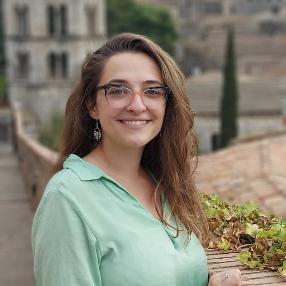

Jessica MACKAY
Universitat de Barcelona, SPAIN jmackay@ub.edu
Jessica Mackay, Dip TEFLA, MA and PhD in Applied Linguistics, University of Barcelona. She is an EFL teacher, CELTA trainer and head of teacher training and development at the UB’s Escola d’Idiomes Moderns (School of Modern Languages).

Carmen MUÑOZ
Universitat de Barcelona, SPAIN munoz@ub.edu
Carmen Muñoz is Full Professor of Applied Linguistics at the University of Barcelona. Her research interests include the effects of age and context on second language acquisition, young learners in instructed settings, individual differences, bilingual/multilingual education, and multimodality in language learning. She has coordinated several funded research projects, and in 2016, she was awarded the Eurosla Distinguished Scholar Award.


Bridget MURPHY
Universitat de Barcelona, SPAIN
bmurphy5252@gmail.com
Bridget Murphy is currently a PhD student and doctoral researcher in Applied Linguistics at the University of Barcelona, Spain. She has 10 years of EFL teaching experience in the US and Spain. Her research interests include mobile-assisted language learning, online interaction, and classroom research.
Diane POTTS
University of Lancaster, UK d.j.potts@lancaster.ac.uk
Dr Diane Potts is a researcher and lecturer at Lancaster University, UK. At Lancaster, she teaches MA modules on social approaches to SLA, language teacher development and digital language language learning as well as PhD modules on research methods. Her prior teaching experience includes applied linguistics for teachers, teaching methodologies for additional language learners (EAL, EFL, ESL), intercultural communication and language socialization in multicultural contexts, and language maintenance and the integration of immigrants in Canada.
14 NOTES ON CONTRIBUTORS
Ida RUFFOLO
University of Calabria, ITALY
ida.ruffolo@unical.it
Ida Ruffolo (PhD) is a Researcher in English Language and Linguistics at the University of Calabria, Italy, where she teaches EAP and ESP. She is a Member of the Faculty Board of the PhD Program Politica, Cultura e Sviluppo (Field of study: Language analysis and interdisciplinary studies). Her research interests are Corpus Linguistics, Discourse Analysis, and ESP, with particular interest in the language of tourism.
Richard J. SAMPSON
Rikkyo University, JAPAN rjsampson@rikkyo.ac.jp
Richard J Sampson (PhD, Griffith University) is an Associate Professor at Rikkyo University, Japan. He teaches courses in English communication and language learning psychology. His research focuses on learner motivation, emotions, and possible selves. He uses action research to explore experiences of classroom language learning from the perspectives of students.
Anna SOLTYSKA
University Language Centre, Ruhr University Bochum, GERMANY
anna.soltyska@ruhruni-bochum.de
Anna Soltyska is a member of academic staff at the Ruhr-University in Bochum, Germany where she coordinates the English programme at the University Language Centre. Her current research interests include implications of AI tools for language teaching and assessment, assessment literacy in post-pandemic conditions and various aspects of assessment-related malpractice.

Brian TOMLINSON
University of Liverpool (UK) and Anaheim University (USA)
Brian Tomlinson has worked as a teacher, teacher trainer, curriculum developer, film extra, football coach and university academic. He is Founder and President of MATSDA (International Materials Development Association), a Visiting Professor at the University of Liverpool and a TESOL Professor at Anaheim University. His most recent (of over 100) publication is: SLA Applied: Connecting Theory and Practice (CUP, 2021) with Hitomi Masuhara.
Jodi WAINWRIGHT

Open University, UK
jodi.wainwright@hotmail.co.uk
Jodi Emma Wainwright EdD. MEd. BSc. is a research fellow with the Open University and the University of Bedfordshire. She teaches English at the Institut National des Sciences Appliqués in central France. She is interested in the use of technologies in blended learning environments, particularly with older adults.
Thomas WOGAN
tom.wogan@cambridge.org
Cambridge University Press and Assessment, Spain

Tom Wogan has worked as an EFL teacher in various countries and as a DOS in a university language centre in Spain. He now works for Cambridge University Press and Assessment as Learning and Assessment consultant in the area of Andorra, the Balearics and Catalonia.


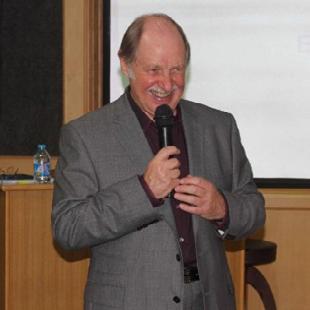
15 ELT RESEARCH IN ACTION
ELT research and practice in a changing world
Jessica Mackay
wheniwaswriting the introduction to the previous ELTRIA publication in March 2020, the COVID crisis was just beginning to take hold. Looking back, we were little prepared for the extent, the duration and the long-term effects of this global event. The experience of the last two years has brought about profound changes in all our lives, both personally and professionally, and many of these have been reflected in the presentations at the online ELTRIA conference in 2022 and, as a result, in this collection of papers.
The emergency transition to remote teaching propelled us unceremoniously, and perhaps unwillingly, forward along our own learning curves, forcing us to adopt and manage new tools and new modes of communication. Despite their precipitous introduction, many of these ‘new’ methods have proven their worth in language learning and teaching and are undoubtedly here to stay, to such an extent that the expression ‘new normality’ already seems clichéd, and we can hardly remember a time when we didn’t have these multiple options available to us.
Therefore, many chapters examine the current realities of our profession. In the last publication based on the ELTRIA conference (2020), only four chapters focused on learning in an online environment, or the use of online tools and applications. In contrast, in this edition, this number has doubled. In Chapter 4, Jodi Wainwright explores the use of learning management systems, such as Moodle, to enhance the motivation and autonomy of older adults learning EFL. We look at the potential technology provides for learning beyond the classroom, for example using the WhatsApp messaging
ELT RESEARCH IN ACTION 17 introduction
app (Bridget Murphy, Chapter 5) or through captioned-video viewing (Daniela Avello & Carme Muñoz, Chapter 7). And of course, we cannot ignore the presence of social media in our learners’ lives, discussed in Kevin Frank Gerigk’s timely analysis of the expectations of GenZ EFL learners (Chapter 6).
Unsurprisingly, a number of contributions reference the challenges we have faced both during the period of emergency remote teaching and the return to face-to-face classes. Jean M. Jimenez and Ida Ruffolo analyse students’ perspectives on language learning in higher education post-pandemic (Chapter 1) while Amalia Babayan’s action research project compares learners’ and teachers’ experiences of online ESP courses and the return to in-person teaching (Chapter 3). A major issue faced by teachers during this period is examined by Anna Soltyska (Chapter 2) in her discussion of how best to provide feedback in an exam preparation course which was moved online during 2021.
Nevertheless, in spite of all these developments, this volume also touches upon timeless questions and debates in the world of language learning and teaching which, to a large extent, transcend the context in which the activity takes place. Seiko Harumi explores the use of the learners’ own language through the lens of ‘translanguaging’ in chapter 9. Kate Kiss (Chapter 11) touches on the vital and yet elusive concept of learner motivation in her discussion of how it is affected by grades awarded and learners’ perceptions of self-efficacy. Equally influential, the role of emotions in the learning process seemingly defies observation. Richard Sampson presents some of his pioneering work in mapping the fluctuation and evolution of emotions over a lesson (Chapter 10).
The remaining group of chapters focuses on issues in research and teaching from the teacher’s perspective. Stephanie King (Chapter 12) reports on a Classroom Action Research training programme and finds parallels with her experience of presenting at ELTRIA. In chapter 13, Anastasia Lovtskaya summarises her qualitative research on secondary school teachers’ beliefs and attitudes towards
18 INTRODUCTION
CLIL. Chapter 8 is an extract from the interview conducted as the introductory session to the ELTRIA conference, in which Brian Tomlinson reflected on topics as diverse as the research-practice divide and learner choice. He concludes the interview with selected examples of success stories from his long and varied experience. The ELTRIA collection concludes with Diane Potts’ fascinating reflection on the challenges, frustrations and imbalances she has encountered in her work with teachers involved in participatory research (Chapter 14).
An initial glance at the contents page of this edition of the ELTRIA publication might suggest a range of themes as diverse as the lives and contexts of the different contributors. I would argue that the common theme that unites all these areas of interest is that of collaboration. Whether this is action researchers sharing their insider views on working with their students or researchers working to explore and articulate teachers’ and learners’ perspectives, ultimately, the aim of each of the projects behind these contributions was to understand and improve the teaching and learning experience: researchers, teachers and learners working together towards shared goals.
ELT RESEARCH IN ACTION 19
SECTION 1
Classrooms in transition: Developing and adapting to changing conditions
ELT RESEARCH IN ACTION 21
CHAPTER 1
Learning languages in Higher Education following the Covid-19 pandemic: student perspectives
Jean M. Jimenez and Ida Ruffolo
Introduction
The outbreak of Covid-19 and the subsequent emergency lockdowns profoundly affected all sectors, including education, where we experienced a sudden shift to Emergency Remote Teaching (ERT) (Hodges et al, 2020) which led to “a fundamental change to core teaching and assessment processes” (Cranfield et al., 2021, p.1). This emergency course delivery mode, which differs from traditional online courses designed to be delivered remotely from the start, meant having to suddenly move from our comfortable face-to-face classrooms to an online world with which many teachers and students were unfamiliar or unprepared for. While studies have been published on the effects of this transition considering both teacher and learner perspectives (e.g., Coman et al., 2020; Cranfield et al., 2021; Means & Neisler, 2021), less has been written on the effects post lockdown (e.g., Almuraqab, 2020).
This chapter will focus, in particular, on the experiences of students at the University of Calabria (Italy) who attended a B1 level preparation English course during the 2021 fall semester, after a period of national and regional lockdowns. Due to space limitations dictated by the strict Covid-19 emergency regulations imposed by the University, which established that classrooms could not exceed 25% capacity, some groups of students attended courses on campus while others continued to attend courses online. Data on the students’ perceptions and attitudes towards the course delivery
ELT RESEARCH IN ACTION 23
mode were collected by means of a questionnaire administered at the end of the semester. The study aims at providing some insights for both academic instructors and university authorities in order to continue to improve didactic experiences. Moreover, while at first it seemed that this ‘emergency’ online delivery mode would only be temporary, it would appear that Covid-19 will be present globally for years to come, hence it is important to consider how this will affect language education and how we can be better prepared for possible future restrictions which may require us to once again leave our in-person classrooms.
Methods Participants
The participants were attending a B1 level English for Basic Academic Skills course as part of their degree in Education Sciences. They were second year students who had started university in the 2020/2021 academic year, which meant that they had attended most of their first year online because of the pandemic. In the first semester of the 2021/2022 academic year, while university policies encouraged holding lessons on campus as much as possible, some courses were still being held completely online for the reasons mentioned previously. As regards the English course in particular, the students had been divided into groups based on their level, with 4 groups being offered face-to-face lessons on campus while 8 groups attended online. Unfortunately, due to issues related to Covid-19, two of the on-campus courses had to move to an online modality towards the end of the semester, which meant that some students attended a blended mode where some of the lessons were in person, while others were held online. A total of 115 students participated in the study, of these 87 attended online, 16 in person, and 12 in a blended mode. 110 of the participants were women, which is not unusual for this degree course, with the majority of the students aged 20 to 21.
SECTION 1 CLASSROOMS IN TRANSITION 24
Data Collection Tools
The data were collected using an online questionnaire administered at the end of the course. Completion of the survey was voluntary and responses were kept anonymous. The aim was not to assess the course content per se, but rather the way in which the course had been delivered. For this purpose, the questionnaire was divided into macro-sections, each with a series of items which included yes/no, Likert scale, dropdown lists, and open questions. The items were all in Italian to ensure that there was no misunderstanding due to the language. Specifically, in addition to a section on general information (e.g., age, residence, internet connection, devices used) and digital competence, there were items regarding:
• The advantages and disadvantages of the course delivery mode (online or on campus)
• The learning environment (home environment or classroom environment)
• The students’ engagement (e.g., to what extent they interacted with the teacher/their peers, their level of concentration, their interest)
• Their participation preference/style (e.g., their attendance rate, preference for working alone or with others)
• Their perceived impact on their learning skills in general
• Their perceived impact on their language competences
• The challenges met and achievements reached
Some sets of questions varied depending on whether the students had attended the course in person (N=16) or online (N=87). Those students who had attended a blended mode (N=12) were asked to reply to both sets of questions.
For the purposes of this paper, we will focus on the advantages and disadvantages of the course delivery mode, students’ engagement, their perceived impact on their language competences, and their challenges and achievements.
ELT RESEARCH IN ACTION 25
Results
Advantages and disadvantages of the course delivery mode
Among the advantages listed by the students who attended all or part of the course on campus (N=28), 32% of the respondents said it allowed them to experience university life more fully. The same percentage was related to having more interaction with the teacher, while 25% said they interacted more with their classmates, got to know each other better, and that understanding the topics presented in class was easier face-to-face. Only 11% listed having fewer distractions as an advantage and just 4% said attending in person was more motivating. As for the disadvantages, most were related to fear of getting Covid (43%) and finding it annoying to wear a mask (36%). 18% felt uncomfortable when speaking in class, while 11% thought it was more stressful. Finally, 4% found no disadvantages.
Turning to the advantages of attending the course online (N=99), the most popular answers were having easy access to online materials (54%), being able to record the lesson (46%) and manage their time better (41%). 21% said they had more interaction with the teacher, while only 6% said they had more interaction with other students. There was also reference to saving money, with 33% of the respondents listing this as an advantage. Not surprisingly, the greatest disadvantages were related to problems with technology (66%). Another disadvantage was reduced interaction with the teacher and with classmates, which was chosen by 25% and 29% of the students respectively. 16% felt they were socially isolated. Lastly, 9% said there were no disadvantages.
Students’ engagement
Participants were asked to indicate their level of agreement with statements related to student engagement using a Likert scale of 1-5 (strongly disagree-disagree- neither agree nor disagree- agreestrongly agree). In particular, the graphs below refer to the percentages of participants who agreed or strongly agreed (4-5) with the statements. As can be seen, over half of the participants who at-
SECTION 1 CLASSROOMS IN TRANSITION 26
tended in person were very happy with the quality of the lessons and felt it was easy to engage with the teacher. It is interesting to note that 25% said they missed having class online along with 18% who felt it was difficult to concentrate when they were surrounded by other students, which may imply that they had become accustomed to remote classes.
Student engagement: In person
I AM VERY HAPPY WITH THE QUALITY OF THE LESSONS
IT WAS EASY TO ENGAGE WITH MY FELLOW STUDENTS IN CLASS
IT WAS EASY TO ENGAGE WITH THE INSTRUCTOR IN CLASS
I CAN’T CONCENTRATE IF I’M SURROUNDED BY OTHER STUDENTS

I MISSED HAVING LESSONS ONLINE
As for those who had attended the course online, almost half of the students claimed to be very satisfied with the quality of the lessons. As regards interaction, while 45% thought it was easy to interact with the instructor, a lower percentage (27%) said this applied to interacting with their classmates, which is also much lower than the percentage of agreement on the part of students who attended in class (43%). In fact, 47% of those who attended online said they missed interacting with students face-to-face in class. Concentrating online does not appear to be a problem for students, with 14% agreeing with this statement.
ELT RESEARCH IN ACTION 27
25% 18% 54% 43% 54% 0% 10% 20% 30% 40% 50% 60%
Student engagement: Online
I AM VERY SATISFIED WITH THE QUALITY OF THE ONLINE LESSONS
IT IS EASY TO INTERACT WITH MY FELLOW STUDENTS DURING AN ONLINE LESSON
IT IS EASY TO INTERACT WITH THE INSTRUCTOR DURING AN ONLINE
LESSON

I CANNOT CONCENTRATE WHEN THE LESSON IS LONGER THAN 15 MIN
I MISS THE IN-PERSON INTERACTION WITH OTHER STUDENTS
Perceived impact on language competences
In this section, the participants also used a Likert scale to indicate their level of agreement with the statements provided. As for preparation for the final test, both modalities had similar percentages of agreement (57% on campus, 59% online). Surprisingly, a high percentage of students who had attended online believed the course had helped them improve their interaction skills compared to those who attended on campus (46% to 39%). The percentage is also higher for the other skills, including improvement of language competence in general.
SECTION 1 CLASSROOMS IN TRANSITION 28
47% 14% 45% 27% 47% 0% 5% 10% 15% 20% 25% 30% 35% 40% 45% 50%
Impact on language competences: in person
PREPARATION FOR FINAL TEST
IMPROVEMENT OF INTERACTION SKILLS
IMPROVEMENT OF WRITING SKILLS
IMPROVEMENT OF READING SKILLS
IMPROVEMENT OF SPEAKING SKILLS
IMPROVEMENT OF LANGUAGE COMPETENCES IN GENERAL
Impact on language competences: Online
PREPARATION FOR FINAL TEST
IMPROVEMENT OF INTERACTION SKILLS
IMPROVEMENT OF WRITING SKILLS
IMPROVEMENT OF READING SKILLS
IMPROVEMENT OF SPEAKING SKILLS
IMPROVEMENT OF LANGUAGE COMPETENCES IN GENERAL
Challenges and achievements

The last section allowed participants to specify the challenges they had met as well as the achievements they had reached. Among the challenges listed by the on-campus students, there is difficulty understanding the teacher (probably because masks were mandatory) and improving their listening skills, getting used to physically going back to class, and interacting with new people. On the oth-

ELT RESEARCH IN ACTION 29
36% 36% 39% 46% 39% 57% 0% 10% 20% 30% 40% 50% 60%
57% 41% 61% 55% 46% 59% 0% 10% 20% 30% 40% 50% 60% 70%
er hand, they saw managing to interact with the teacher and their classmates as an achievement, as well as being able to focus more and putting more effort into improving their skills.
Some students who attended online also found understanding and interacting with the teacher difficult because of the course delivery mode. In fact, they pointed out that trying to learn a language without having the physical presence of a teacher is quite challenging. Many students said it was difficult to speak with their webcams on, which is one of the main reasons why many of them did not turn them on even when they were prompted to do so. A lack of socialization was also seen as a great challenge. As for the achievements, managing to work on their own and focusing more were mentioned as was overcoming shyness.
Final reflections
The current study presents some limitations, namely the relatively small sample size and the fact that the on-campus, online, and blended groups were different sizes. Nevertheless, the findings provide some interesting insights into the impact of the Covid-19 pandemic on students’ attitudes and beliefs about online and in class learning.
In general, students who attended in person seemed happy to be back on campus although there was still some hesitancy. They tended to participate more actively, and there was more interaction with the teachers and with other students.
Students who attended online generally seemed more satisfied with the delivery mode, with some of them expressing the wish to continue attending remotely even after restrictions have been lifted. Some students prefer this delivery mode because they seem to be afraid to interact and they do not seem ready to leave the comfort of their own homes yet.
Turning to language competences, the percentage of online students who report having improved these is higher than that of those who attended in person. However, no generalizations can be made regarding this so far, as it was a self-evaluation. These answers will be
SECTION 1 CLASSROOMS IN TRANSITION 30
compared to the results of the test they took at the end of the course to verify whether, or not, there is a correlation between course modality and improvement of language competences.
It is clear that Covid-19 has accelerated a digital revolution and has heightened the necessity to optimize teaching and learning in similar contexts in the future. In line with other studies, these research findings underline the importance of providing innovative teaching materials in order to increase student engagement and motivation regardless of the teaching delivery mode.
References
Almuraqab, N. A. (2020). Shall Universities at the UAE Continue Distance Learning After the COVID-19 Pandemic? Revealing Students’ Perspective, International Journal of Advanced Research in Engineering and Technology (IJARET), 11(5), 2020, pp. 226-233.
Coman, C., Gabriel Tîru, L., Mesesan-Schmitz, L., Stanciu; C., & Bularca, M.C. (2020), Online Teaching and Learning in Higher Education during the Coronavirus Pandemic: Students’ Perspective. Sustainability, 12, 10367, 2-24.
Cranfield, D.J., Tick, A., Venter, I.M., Blignaut, R.J., & Renaud, K. (2021). Higher Education Students’ Perceptions of Online Learning during COVID-19—A Comparative Study. Educ. Sci., 11, 403.
Hodges, C., Moore, S., Lockee, B., Trust, T., & Bond, A. (2020). The Difference between Emergency Remote Teaching and Online Learning, Educational Review, 27 March 2020. https://er.educause.edu/articles/2020/3/the-difference-between-emergency-remote-teaching-and-online-learning
Means, B., & Neisler, J. (2021). Teaching and learning in the time of COVID: The student perspective. Online Learning, 25(1), 8-27.
ELT RESEARCH IN ACTION 31
CHAPTER 2
How does feedback work in an online exam preparatory course? Insights from a teacher research project
Anna Soltyska
Introduction
This article provides an overview of a teacher research project conducted in an English for Academic Purposes course for prospective IELTS test-takers and focused on the development and assessment of writing. The aim was to learn if and how feedback in online contexts can be provided efficiently and observe to what extent online feedback can meet students’ divergent needs. The author reports on preliminary findings from a small-scale classroom study which might offer insight into the nature of developing writing skills via teacher’s feedback in an online exam preparation course attended by a highly heterogenous studentship.
Background of the project
The project in question was conducted between April 2021 and January 2022 in the course “English for IELTS and beyond (B2-C1)” offered at the University Language Centre of the Ruhr-Universität Bochum. Between the summer 2020 and winter 2021/22 the ersatz edition of the course was offered exclusively online 1 due to the closure of German universities during the Covid-19 pandemic
1 Before the onset of the pandemic the course had been taught in a blended learning format whereby the teacher-students interaction would take place in person and be complemented with self-study phases via Moodle (for more information on this open-source Learning Management System see https://moodle.org).
ELT RESEARCH IN ACTION 33
In line with major principles of teacher research, the project was a systematic inquiry of a self-reflective character, conducted by the teacher on the basis of the students’ work, in order to improve their awareness of implications of their work and enhance their teaching and assessment practices, thus students’ learning (see Borg 2017:165). It emerged from experiences collected by the author during emergency remote teaching (ERT) (Hodges et al., 2020) and is rooted in a structured reflection on the makeshift version of the course, which concerned, in particular, opportunities and challenges related to providing feedback in the digital setting.
Focus of the project and types of feedback provided
The project focused on the role of feedback in the development and assessment of writing as measured by IELTS Academic Writing Task
2. A typical exam task requires test-takers to write an argumentative essay of at least 250 words in response to a statement or premise. Writers should discuss viewpoints presented in the topic and provide relevant examples from their own knowledge and experience to justify claims. Within the IELTS exam the essay writing is tested within a time limit (40 minutes) by means of handwritten submissions with no aids such as dictionaries, thesauri and spellcheckers.
In the project, students’ writing performance was assessed on the basis of essays composed in an unsupervised way, typed and submitted via Moodle. These divergent features of the writing development and assessment process within the course and in the actual IELTS testing situation may have significant implications for the generalisability of some project results for offline contexts. Nevertheless, they were unavoidable under the pandemic circumstances and ERT.
Each term, six essay tasks were set and collected via Moodle. Students had one week to write each text and the teacher had approximately four days to assess submissions and announce the results and comments via Moodle. Fig. 1 summarises the type of feedback provided on each submission.
SECTION 1 CLASSROOMS IN TRANSITION 34
3. Participants in the study
38 students participated in the study (18 in the summer 2021 and 20 in the winter 2021/2022). The participants were highly heterogeneous considering their L1, degree programmes, academic and professional experience, and ages. Their English proficiency levels varied from B2 to C1+ and they attended the course for various purposes. Fig. 2 provides the overview of diverse studentship in the two cohorts based on the data analysis from numerous sources 2 .
2 Students’ proficiency levels were established on the basis of an in-house calibrated placement test (C-test); the information on students’ degree programmes and ages was taken from the university study management system; the purpose of taking the course and students’ L1 and academic and professional experience are self-reported. All participants consented to their data and performance samples being collected and processed for the purpose of the TR project.
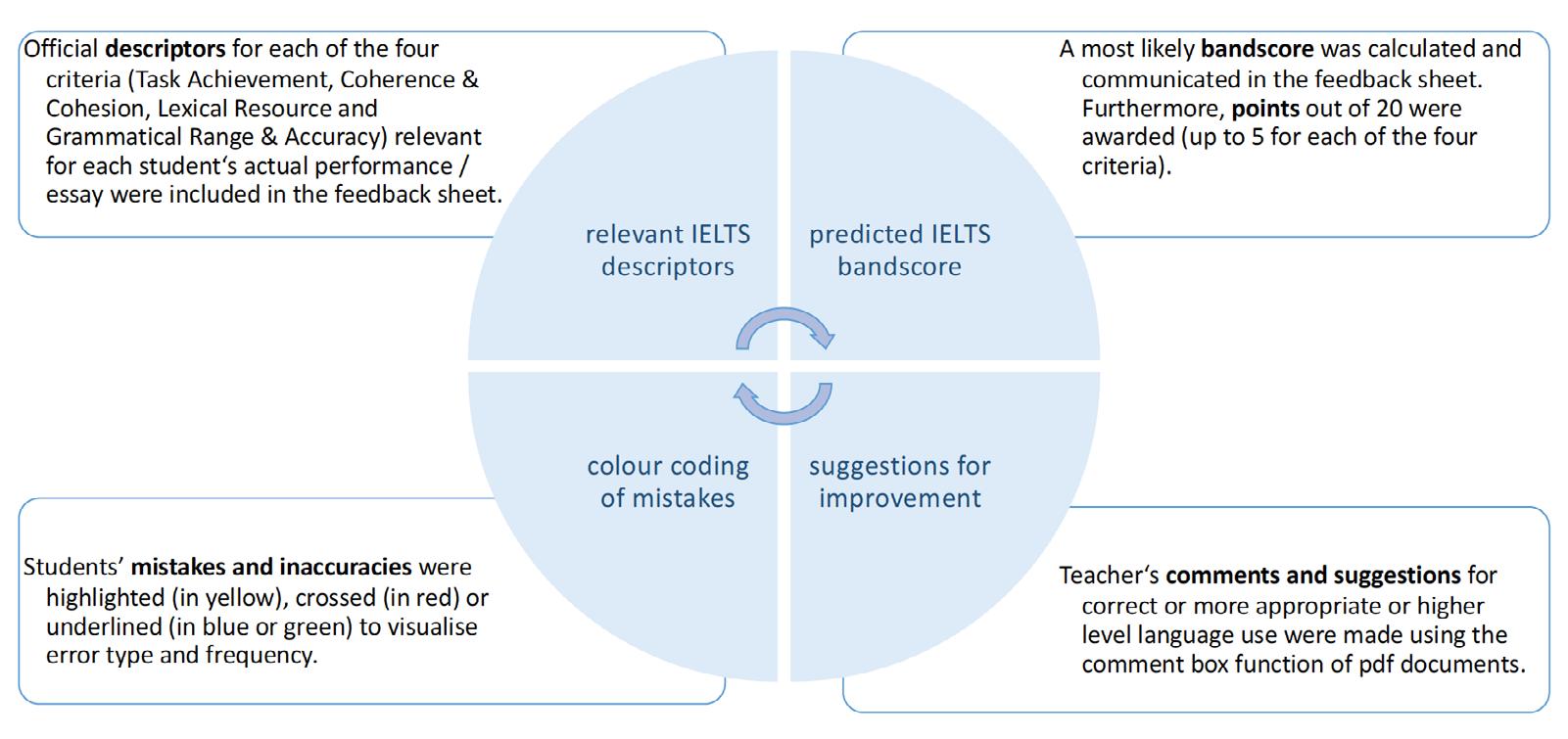
ELT RESEARCH IN ACTION 35
Fig. 1 Overview of the four components of teacher’s feedback on students’ writing
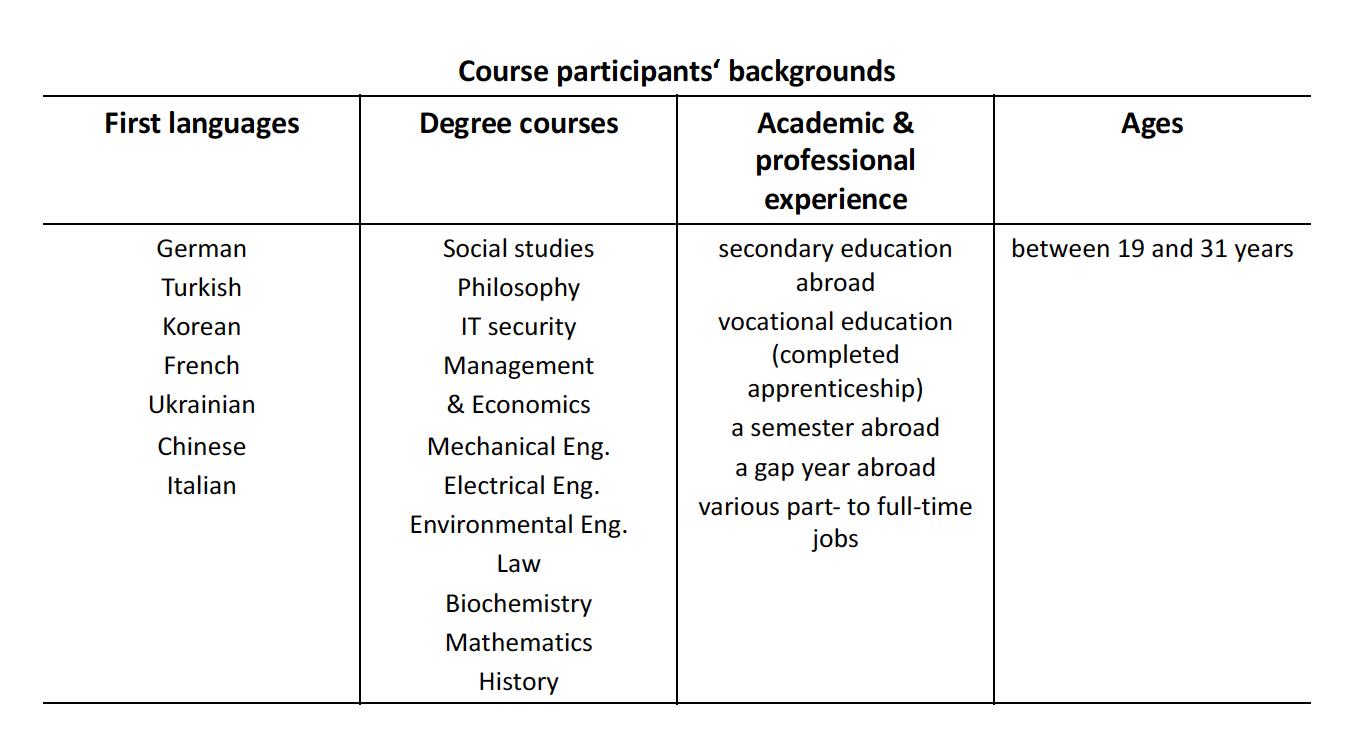
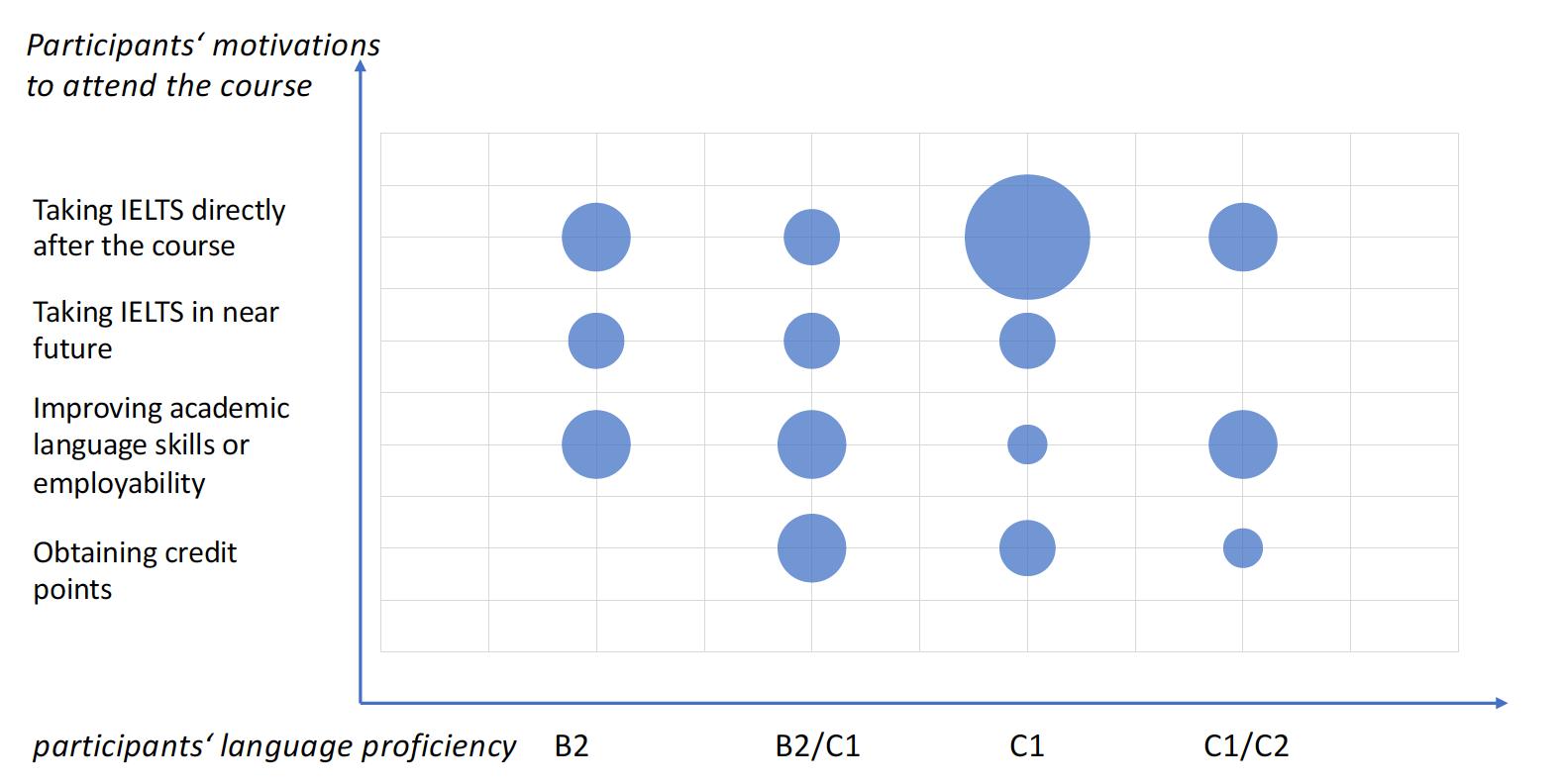
SECTION 1 CLASSROOMS IN TRANSITION 36
Fig. 2 Course participants’ backgrounds
Fig. 3 Overview of the participants of the project (size of dots denote numbers of participants at a given proficiency level attending the course for a given purpose).
Methodology
Participants’ opinions on the feedback provided were collected in an online survey (n=38). The questionnaire, comprising 7 closed items (multiple and single choice items, including Likert scale responses) was created in line with the guidelines provided by Dörnyei and Taguchi (2010) and Dunn (2013) and delivered via Moodle in the last week of each course.
Students’ essays (n=145) were assessed by means of the grading rubric based on publicly available IELTS essay bandscore descriptors 3 . The results were analysed in terms of mean overall scores for each essay topic, mean scores for each of the four criteria as well as improvement (or its absence) of selected aspects of writing of each student. Qualitative analysis of essay results comprised an overview of common errors and evidence for individual achievement.
The teacher’s reflective journal included information on assessment and feedbacking process in the online setting.
Preliminary findings
In the students’ view, submitting essays for improvement and assessment proved not only the most enjoyed course task at the time of ERT (according to 92% of respondents), but was also perceived as the activity which helped most in language learning (83%). When working on subsequent assignments all students admitted referring to the feedback previously received. Moreover, they all found the feedback “very” or “quite” useful, whereby teacher’s suggestions for more appropriate or correct use were named as most helpful (over 90% of responses) irrespective of students’ level and purpose of attending the course. This type of most useful feedback was closely followed by color-coded marking of mistakes.
The quantitative analysis of students’ overall scores and score trends per criterion and qualitative study of their essays confirm
3 For details of the grading rubric see https://takeielts.britishcouncil.org/sites/default/files/ielts_task_2_writing_band_descriptors.pdf.
ELT RESEARCH IN ACTION 37
some noticeable overall improvement in writing skills.
The teacher’s views on providing feedback online as per their reflective journal were balanced and included both benefits and drawbacks. This subjective perspective is summarised in Fig. 4.
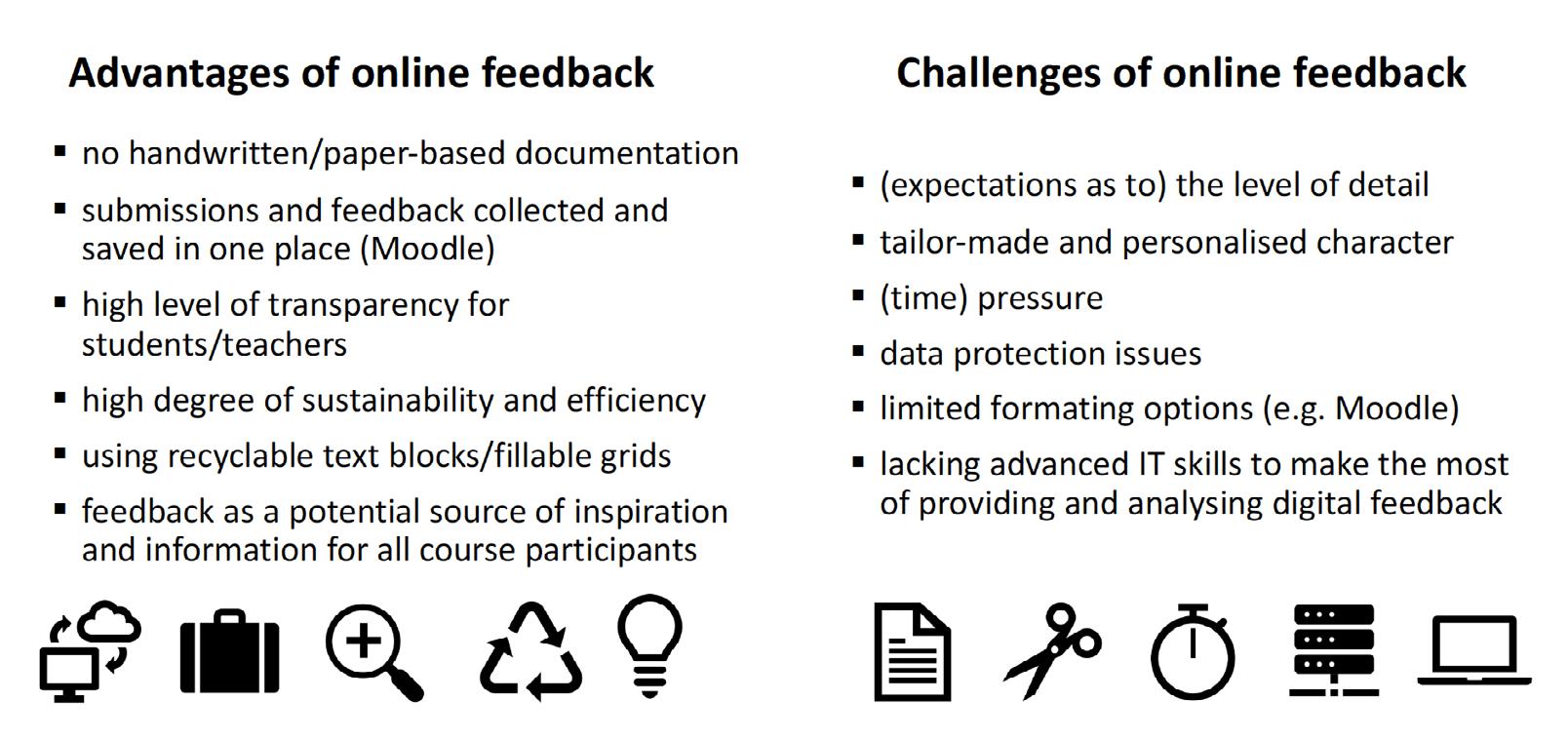
Conclusion
The study reinforces the view that “learners tend to appreciate comments that feed forward to another task and inform them about the expectations of the educator with regard to the quality of that task” (Henderson et al, 2019, quoting Hendry et al, 2016). Despite the heterogeneity of their profiles, overall the participants were satisfied with the feedback, which might have contributed to the improvement of their writing skills. However, as “there is no single model that will guarantee feedback to be useful and effective for all students and teachers” (Henderson et al, 2019 quoting Sadler 2010 – additions in italics from the author), the findings from this small-scale study may not apply elsewhere.
SECTION 1 CLASSROOMS IN TRANSITION 38
Fig. 4: Teacher’s views on providing feedback in an online setting
Further training in providing feedback digitally and establishing internal rules on reacting to students’ writing could contribute to a more positive feedbacking experience also for teachers.
References
Borg, S. (2017). Twelve tips for doing teacher research. University of Sydney Papers in TESOL , 12, 163-185.
Dörnyei, Z. & Taguchi, T. (2010) Questionnaires in second language research: Construction, administration and processing. New York: Routledge.
Dunn, D.S. (2013). Research methods for social psychology. Hoboken, NJ: John Wiley & Sons.
Henderson, M., Ryan, T., Boud, D., Dawson, P., Phillips, M., Molloy, E. & Mahoney, P. (2021). The usefulness of feedback. Active Learning in Higher Education 2021, Vol. 22(3) 229-243. https:// doi.org/10.1177%2F1469787419872393
Hodges, C., Moore, S., Lockee, B., Trust, T. & Bond, A. (2020). The Difference Between Emergency Remote Teaching and Online Learning. Educational Review, 27 March 2020. https://er.educause.edu/articles/2020/3/the-difference-between-emergency-remote-teaching-and-online-learning
ELT RESEARCH IN ACTION 39
CHAPTER 3
Following the footprints of online ESP learning: action research
Amalia Babayan
Introduction
Digital experts specify that when streamlining high quality online education, the only significant difference should be the way that the classes are delivered (Monroe, 2010). In 2020 we were granted a unique chance, due to the Covid 19 pandemic, to test the effectiveness of learning management systems. In our case, we had an opportunity to test whether Moodle proved reliable and valid (Jeong, 2017) for teachers and students. Language teaching practice conducted entirely online, followed by the return to face-to-face classes after three semesters of isolation, had raised questions that required better understanding of the working process.
The project
The action research we conducted was performed in two phases: during the pandemic period (May-June 2020) and the comeback phase (September-November 2021). The participants in the study were II, III and IV-year Bachelor’s program students of the Faculty of International Relations of YSU and the professors teaching them: 35 students and 12 professors in the first phase and 33 students and 16 professors in the second.
The frequency of both online and offline classes was three times a week with double forty-minute sessions, with 15-19 students in each group. In both phases the standard academic curricula of ESP teaching at corresponding levels was delivered, which implied a variety of language learning activities ranging from reading, material dis-
ELT RESEARCH IN ACTION 41
cussions, peer work and role-play to written tasks, press reports and slide-show topical presentations. Student participation was mandatory, and lessons were conducted in standard synchronous mode.
The aim of the first phase of the research project was to explore the extent to which online platforms allow the creation of an integrated and fully functioning ESP classroom; the influence of socio-psychological aspects and the inclusion or omission of essential ESP teaching components. In light of the findings of the first phase, the second phase of the research pursued one goal: to find out the factual working differences between the online and offline language teaching as assessed by students and professors.
Methodology
The methodology encompassed collecting data from field notes during and after lessons, questionnaires, interviews, analysis of assignment feedback, student assessments and statistical interpretation. Completing questionnaires or participating in interviews were conducted exclusively on a voluntary basis and questionnaires were anonymous to ensure objectivity. There was no rigid time frame for the interviews, to allow a natural flow of communication.
For the second phase, separate questionnaires were designed for the professors and students containing 5 and 10 items respectively. They consisted of multiple-choice questions, Yes/No questions and questions to be answered on a 0-5 scale. The findings were informed by all the data mentioned above, but were mainly derived from the questionnaire and interview responses.
Findings and Discussion
The findings of the first phase indicate that the multifunctional instructional tool kit provided by the LMA Moodle platform helps to create a comprehensive and well-organized curriculum that works effectively for the teaching and learning of listening, reading and writing competences. However, the development of ESP communicative skills leaves much to be desired. Due to technological lim-
SECTION 1 CLASSROOMS IN TRANSITION 42
itations, such important language learning activities like ad hoc simulations of negotiations and interviews, team-work discussions and role-play are not practically feasible within the limits of the academic time frame.
The restricted use of humour and the lack of body language result in more formal onscreen contact, which, in its turn, complicates the instructor’s feedback on students’ speaking performance. The challenges posed to the teacher’s feedback are often caused by technical difficulties , the excessive exposure to online public attention, which students are not always comfortable with, and the inability to use body language and extra-lingual means to the full for making or inviting corrections. Hence, teacher-student contact during online classes tends to be comparatively formal.
The Moodle platform works well for making presentations, delivering talks and speeches. However, the type of teamwork where students collaborate shoulder-to-shoulder, where there is a ‘wireless’ bioenergy and synergy, an overlapping give-and-take of ideas and enthusiasm is missing during online classes.
The findings of the second phase complemented the results of the first-phase. When rating the efficiency of online and offline teaching, 78% of the students (26) preferred offline learning, and only 24% (8) considered online education as an option. Consequently, the enthusiasm for coming back to offline classes is high among both students and professors: 33 against 24 (students) and 14 against 2 (professors). In response to the question: ‘What is it that appeals to you in offline education?’ 28 responses indicate ‘Contacts and communications’, 27 – ‘Learning and education’, and 23 – ‘Friends’ and 19 - ‘Professors’.
The format of this paper allows a brief introduction to the study. In future publications we will present a detailed analysis of the students’ responses, as well as discussion of the development of students’ classroom skills, their attendance, homework performance and feedback. We will also explore the professors’ assessments of the organization of the academic process in the online/offline fora.
ELT RESEARCH IN ACTION 43
Conclusion
ESP online teaching and learning is, in many aspects, beneficial, although it proves lacking in the area of communicative skills. Nevertheless, with further advanced technological development, the LMA has the potential to become a highly effective learning platform for teaching and learning ESP. The research findings also indicate that live human communication and a social environment stand out as a crucial factor in the language education process as assessed by students and professors alike.
References
Jeong Kyeong-Ouk. 2017. ‘The Use of Moodle to Enrich Flipped Learning for English as a Foreign Language Education’. Journal of Theoretical and Applied Information Technology, Vol. 95, No. 18, 4845-4852.
Monroe R. 2010. ‘First Decade High Impact’. Paper presented at the CASCON conference, Toronto Ontario Canada, November 2010.
ELT RESEARCH IN ACTION 44
SECTION 2 Beyond the classroom: Maximising learning opportunities
ELT RESEARCH IN ACTION 45
Using Moodle increases older adult language learners’ autonomy and motivation
Jodi Wainwright
Introduction
When older adult learners are supported and encouraged by participatory and collaborative activities that are particularly addressing their interests and needs, their motivation is increased. In return, this also promotes their understanding to learn how to learn by themselves. Moodle gives these learners a context in which they can learn with and from each other, developing their autonomy collectively. Moodle gives the possibility of bringing more diverse and authentic materials into the classroom to practise listening skills and to enhance cultural awareness. Such materials are especially effective in helping learners work on their own and at their own pace, thus fostering individualised learning, as well as skills related to self-reflection, autonomy and independence. The findings from this study in France show how the use of Moodle can increase autonomy and motivation for older adult language learners.
The use of technology in language learning is associated with autonomous learning which enables learners to continue their learning beyond the classroom. Blended learning may have a beneficial effect on the learner by offering a different kind of support: the opportunity to work at a time and place according to individual preferences and needs. Furthermore, the act of learning how to use technology can add to a sense of achievement for older adults (Lee et al., 2013). Autonomy is not only about giving free choices to the learners to choose what and how they learn something or transferring all control and
ELT RESEARCH IN ACTION 47
CHAPTER 4
responsibilities in learning to the learners, but it is also about how to teach them to use their own capacity to learn effectively.
Digital learning, such as using Moodle, provides enhanced motivation for learners, keeping them interested and focused on the learning content because they are also interested in engaging with the technology and technologically mediated materials. Benefits include being able to access authentic language learning inputs at any time, being able to follow a programme of learning in one’s own time, being able to interact with learning colleagues and peers in all parts of the world at any time, and being able to constantly assess and reassess one’s learning successes, strengths and weaknesses. As Carrier (2017) says, digital learning puts learners in control of their own learning. By sharing knowledge and expertise and supporting each other in a Community of Practice, as Wenger-Trayner and Wenger (2015) describe, learners develop a shared collection of resources and this sense of ownership leads to increased motivation.
Research Questions
The results reported in this chapter are part of a doctoral research study entitled “When older adults use Moodle to learn languages…” the main research questions for the study were:
• What are the challenges for older adults using Moodle to learn languages?
• What are the rewards for older adults using Moodle to learn languages?
Methodology
Using a qualitative case study methodology, learners were interviewed about their use of Moodle to learn English. The interviews were supplemented by data from the Moodle platform in order to fully analyse learners’ perceptions of their use of Moodle with the aim of answering the research questions. Initial interviews were carried out with twenty-two learners and five of these learners then
SECTION 2 BEYOND THE CLASSROOM 48
took part in follow-up stimulated recall interviews. Using reflexive thematic analysis, the initial interviews were analysed using inductive thematic analysis and the follow-up interviews were analysed using deductive thematic analysis with the codes identified from the initial interviews.
Results
Learners appreciate the flexibility that Moodle provides in as much that “we can work at any time we want, for however long we want” and “we can exchange with other learners at any time” (L*4). L*9 also said “we can access it all the time” and “that’s the advantage of Moodle, you can work on it whenever you want”. L*20 said “it’s accessible when you want” and L*21 “it is good to use at home”. This flexibility is also evident in comments such as “I would have worked at home less if I hadn’t had Moodle” (L*17).
Using Moodle gives learners time and space to reflect on their participation and learning, L*4 said “we have more time, we think more”. L*15 said, “I take more time to do things” and L*18 said, “we have time to do our lessons, time to do our homework quietly”. L*4 described how through using Moodle “we learn to fend for ourselves because we have no-one in front of us to answer our questions as in class” and “it’s great when you’re sick you can always learn at home”. L*19 said that in order to use Moodle “you have to be autonomous” and “we can repeat at our own pace… this progression at one’s own pace, it can be an asset”. L*9 explained how using Moodle “enables me to work at home… without support”.
Learners find using Moodle motivating, with comments such as, “Moodle encouraged me to practice” (L*9) and “it made me want to come back more to learn English” (L*10). L*3 said “I am more eager to learn and improve myself” and “when I watch the videos, it makes me try to speak for myself”. L*8 said “it energises the learning” and L*13 said “it’s rewarding”. L*17 described how using Moodle, “motivated me to do my personal work at home”. L*11 said “it enabled me to see the corrections, to keep me informed. That was a
ELT RESEARCH IN ACTION 49
very positive thing for me because it kept me going”. For L*19, using Moodle “I get the feeling that it encourages me to try to do better”.
Conclusions
The increasing use of technologies in education allows tailoring of learning experiences to individual learners, to respond to learner-driven choices about where, what and how learning occurs. Moodle allows learners to manage their learning and promotes a learner-centred environment. Learner-centredness embraces the notion that learners have agency over their learning. Learners have a sense of agency when they feel in control of things that happen around them; when they feel they can influence events.
Having agency means that learners develop aspirations. Participating in a social learning space reflects both the aspiration to gain some new capability and the expectation that it will contribute to a difference that matters. The use of Moodle can assist older adult language learners to use digital technologies, increases motivation and facilitates autonomy. Being autonomous helps learners to develop the awareness, knowledge and skills that they need in order to be able and willing to take control of their own learning.
References
Carrier, M. (2017). Introduction to Digital Learning. In M. Carrier, R. Damerow, & K. Bailey (Eds.), Digital Language Learning and Teaching (pp. 1–10).
Lee, G. Y., Yip, C. C., Yu, E. C., & Man, D. W. (2013). Evaluation of a computer-assisted errorless learning-based memory training program for patients with early Alzheimer’s disease in Hong Kong: a pilot study. Clinical Interventions in Aging, 8, 623–633. https://doi.org/10.2147/CIA.S45726
Wenger-Trayner, B., & Wenger, E. (2015). Communities of practice: A brief introduction. http://wenger-trayner.com/wp-content/uploads/2015/04/07-Brief-introduction-to-communities-of-practice.pdf
SECTION 2 BEYOND THE CLASSROOM 50
CHAPTER 5
The timeliness of written corrective feedback in a classroom WhatsApp group: A comparison of two feedback modalities and learners’ perceptions
Bridget Murphy
Introduction
Corrective feedback (CF) facilitates language learning, yet when to give feedback in the instructional sequence remains up for discussion among teachers and researchers. Broadly speaking, oral CF in face-to-face (FTF) classrooms can be provided at two times: during a communicative task (immediate corrective feedback, or ICF) or after a communicative task takes place (delayed corrective feedback, or DCF). From a theoretical perspective, second language acquisition seems to support immediate correction because such oral feedback develops communicative competence (Li, 2018). From a pedagogical perspective, teacher training manuals recommend delayed correction since ICF might disrupt fluency and embarrass learners (Harmer, 2012). These perspectives stem from the FTF classroom setting, but do they still hold true in other educational contexts such as mobile-instant messaging (MIM)?
Teachers increasingly use MIM applications like WhatsApp on mobile devices to encourage language learning and the practice of communicative skills beyond the classroom (Benson & Reinders, 2011; Kukulska-Hulme & Shield, 2008). The permanency of chat messages makes MIM applications useful feedback platforms while students complete communicative tasks (Andujar, 2022). As students can read messages in any order and at any time, the concepts of “immediate” and “delayed” might be different in this type
ELT RESEARCH IN ACTION 51
of classroom context. For this reason, the present study looked at two CF modalities provided through WhatsApp and how these modalities differ in terms of students’ response rate, self-repair success rate, and perceptions.
Methodology
Study participants (aged 19 to 48) were part of an English as a Foreign Language course (CEFR level B2) at a fee-paying university language school in Barcelona, Spain. The 10-week blended course consisted of 20 contact hours through Zoom and 20 hours of independent guided learning activities. After students signed consent forms, the teacher created the WhatsApp group with the researcher acting as task facilitator and CF provider. Ten students participated in the chat and completed the subsequent interviews and questionnaires.
Students were given five communicative tasks over five weeks to complete in the chat. All tasks were based around topics in the students’ coursebook and elicited specific target language (TL) items that students learned in class on Monday mornings. The first task served as an introductory task, and the next four were interventional, alternating between drill-like grammar exercises and open-ended prompts. Tasks were given to students via the WhatsApp group on Monday afternoon and continued through Friday morning.
For the first two weeks of the intervention, students received DCF given on Friday afternoon as a language-based activity in which students were invited to correct five selected errors. See Figure 1 below for an example.
SECTION 2 BEYOND THE CLASSROOM 52
For the last two weeks, students received ICF within 24 hours of error commission. Students repaired their own errors following the researcher’s multi-step feedback procedure including two prompts and a recast. The researcher (1) resent a student’s erroneous utterance to the chat with a thinking emoji to the right of the error, (2) asked a question or gave a metalinguistic clue, and (3) gave a recast (see Figures 2 and 3 below).
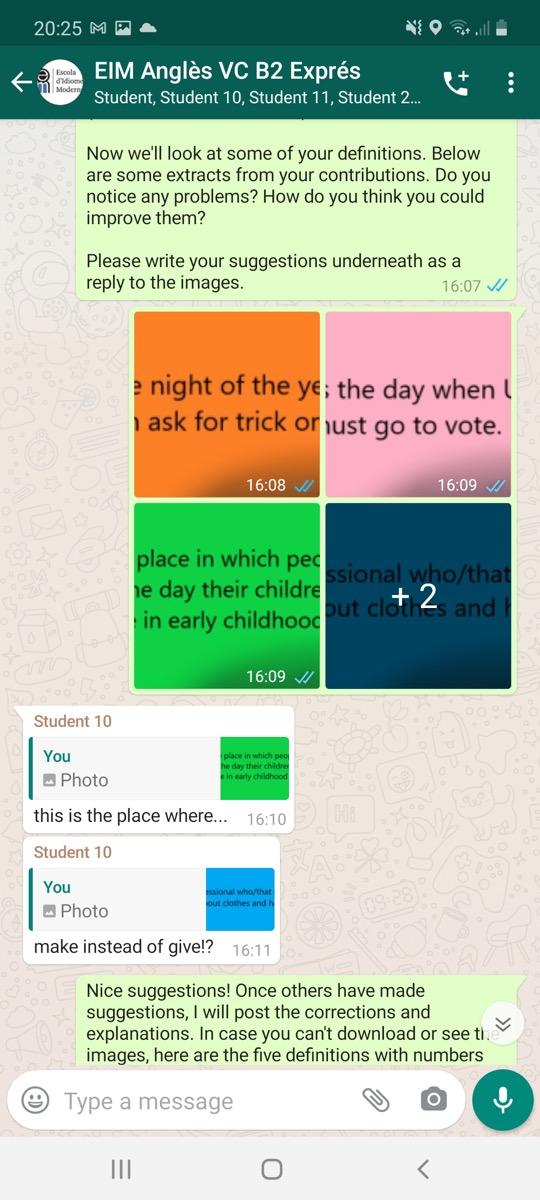
ELT RESEARCH IN ACTION 53
Figure 1. Screenshot of delayed corrective feedback language-based activity

SECTION 2 BEYOND THE CLASSROOM 54 prompt (thinking emoji) successful repair positive feedback no repair prompt (question or metalinguistic clue)
Errors were selected based on a set of predetermined criteria in order of importance developed by the researcher and teacher: (1) TL items, (2) errors causing breakdowns in understanding, (3) recurrent errors, and (4) language not appropriate for a B2 level.
Students’ opinions of the CF modalities were collected via semi-structured interviews over Zoom and a questionnaire using Google forms.
Results and discussion
The chat produced 623 messages over 33 days. Student participation varied greatly, but overall students liked the WhatsApp group and the CF they received.
Regarding response and success rates, more students responded to CF when it was given immediately during the tasks. Participation in the DCF activities on Friday afternoons was very low when some students reported wanting to disconnect from their phones. Students were also more successful with error correction when given immediate feedback, especially after receiving a second prompt.
Overall students (n=8) preferred ICF for several reasons. S3 felt that ICF “stimulate[d] the interaction” in the chat, and two students felt that it allowed for daily language instruction. As S7 said, the ICF was “another form to make you connect and not disconnect from Monday to Saturday.” Students also liked that ICF alerted them to errors soon after they were made, which motivated them more to self-repair. S2 mentioned, “it was very useful to have the feedback like at the moment, and not wait like till the end of the week,” because, as S5 clarified, “you don’t remember what you said in the beginning of the week.”
Only two students preferred DCF reasoning that there was no pressure to respond immediately, and they could review other students’ messages before sending their own.
ELT RESEARCH IN ACTION 55
Conclusions and pedagogical implications
Timeliness of CF is “of theoretical and pedagogical significance” and “a topic that has received little attention” (Li, 2018, p. 1). For practitioners, giving CF through WhatsApp can be successful especially if feedback is immediate while students interact in communicative tasks and are repeatedly prompted to self-correct.
The present study highlights several factors for practitioners to consider when providing feedback in a WhatsApp chat. First, age might play a factor in deciding to give CF through WhatsApp. More research is needed on this topic, but as the present study showed, students older than 28 had mixed preferences regarding CF timing, and the two oldest students voiced the most concern about the use of WhatsApp for language learning. In addition, two students expressed wanting positive feedback, not only corrective. This is simple to do using emojis and GIFs on a WhatsApp keyboard. In the present study, students also reported wanting more spontaneous interactivity facilitated by voice or video messages. Teachers can make use of the multi-modal features of WhatsApp to help students practice communicative skills other than writing. As a suggestion, teachers should avoid giving tasks or DCF on Fridays when students are less likely to respond. Most importantly, it remains to be seen if giving ICF is truly sustainable. The researcher in this study found it very time consuming to give immediate CF, especially with a multi-step CF procedure. Peer feedback might ease this workload as well as setting specific timetables for teacher CF provision through WhatsApp.
SECTION 2 BEYOND THE CLASSROOM 56
References
Andujar, A. (2022). Mobile instant messaging for ELT. ELT Journal .
https://doi.org/10.1093/elt/ccac004
Benson, P., & Reinders, H. (Eds.). (2011). Beyond the Language Classroom. Palgrave Macmillan.
Harmer, J. (2012). Teacher knowledge: Core concepts in English language teaching. Pearson Longman.
Kukulska-Hulme, A., & Shield, L. (2008). An overview of mobile assisted language learning: From content delivery to supported collaboration and interaction. ReCALL , 20 (3), 271–289.
https://doi.org/10.1017/S0958344008000335
Li, S. (2018). What is the ideal time to provide corrective feedback? Replication of Li, Zhu & Ellis (2016) and Arroyo & Yilmaz (2018). Language Teaching, 53(1), 96–108. https://doi. org/10.1017/s026144481800040x
ELT RESEARCH IN ACTION 57
Teacher-talk and Facebook: An enquiry into pedagogical and methodological expectations of GenZ EFL learners in Germany
Kevin F. Gerigk
Introduction
This paper looks into the pedagogical and methodological expectations of Generation Z (GenZ) EFL learners in secondary and tertiary education in Germany. First, GenZ is discussed and a rationale for my research questions is provided. Then, I describe the context and methods used in this study before I present and discuss my results.
Generation Z: local and supralocal context
GenZ is defined as the cohort born between 2000 and 2011, currently inhabiting late secondary or tertiary educational sectors. They have grown up in a fully digitalised world (Chicioreanu & Amza, 2018), which means that they are used to constant exposure to visual stimuli and information. It may, therefore, be suggested that this cohort has an inherent need for the inclusion of technology and social media in education. In addition, Kinash et al. (2013) suggest that this exposure to stimuli may have altered GenZ’s brain structure, leading to reduced attention span, which may have impacted their ability to focus on teacher-centred lessons. Furthermore, Jensen (2019) suggests that due to this cohort’s connectedness, they are diverse and tolerant, preferring collaboration over competition. A study conducted by the British Council (2019) in Germany further suggests that GenZ in Germany suffer from high levels of angst as they do not feel prepared for the requirements of the real world.
ELT RESEARCH IN ACTION 59
CHAPTER 6
They blame this on the outdated school system and educational structures in the country. This study seeks to find out more about the needs and expectations of this cohort by looking at the following two research questions:
1. What do GenZ learners in Germany think about the inclusion of technology and social media in the L2 classroom?
2. How do GenZ in Germany expect the role of their teachers to be to facilitate their learning?
Local Context & Participants
Data were collected in three federal states in Germany, from one Realschule (non-academic secondary branch), one Gymnasium (academic secondary branch) and one Berufsfachschule (vocational college). Originally, 100 participants had signed up for the study, however, due to the emerging COVID-19 pandemic, only 20 learners participated eventually. From this total number of participants, 13 attended a vocational college and seven attended secondary schools, with 6 participants volunteering to participate in the follow-up interviews.
Methods
A mixed-methods QUAN → qual approach was chosen to allow for data triangulation (Dörnyei, 2007). The selected data for this paper was harvested from a quantitative questionnaire containing 14 Likert-Scale items. Once the questionnaire was evaluated, follow-up semi-structured interviews were conducted with questions based on the questionnaire findings. Data collection was conducted between April and July 2020.
Results and Discussion
The first research question attempts to identify the preferences towards the inclusion of technology and social media in the EFL classroom. The questionnaire results can be seen in Figure 1 below. It
SECTION 2 BEYOND THE CLASSROOM 60
must be noticed that the majority of participants find the consumption of authentic English content (e.g. YouTube clips) and the application of the language in these contexts highly motivating (80.0% and 72.5%, respectively). At the same time, learners appear to be averse to the idea of incorporating digital devices, such as their smartphones, and social media, such as their private Instagram or Facebook accounts, into the active EFL lesson.

This is explained by Interviewee 6, who stated that:
“I would never use social media in class. For me it’s a rather private thing I use in my free time […] and it needs to be segregated from school”
GenZ may be aware of the benefits of connecting leisurely with others online, however, prefer not to do so in class for privacy concerns. Furthermore, GenZ do not seem to use many paper-based resources. Instead, they resort to online search engines for research (87.5%). This indicates that a one-size-fits-all approach using contrived audio-visual teaching materials may be detrimental to the learners’ experience. Instead, a more individualised approach to materials, including online resources of interest, access to online search engines and encyclopedias and the opportunity to exchange
ELT RESEARCH IN ACTION 61
Figure 1. Questionnaire data: Technology and Social Media in the L2 classroom.
language via social media in unmonitored contexts may be beneficial for GenZ’s language learning experience.
The second research questions attempts to ascertain how learners see their teachers. The questionnaire results can be seen in Figure 2 below. Interestingly, the learners seem to rely on their teachers for feedback, whilst the teacher is not perceived as a source of motivation per se (95.0% and 20.0%, respectively). In addition, the teacher is still seen as an authority figure (65.0%), however, this transpired more in the role of setting goals (65.0%) and being a source of information (60.0%).
Furthermore, it can be seen that teacher-centred lessons are less favoured by GenZ learners, who in turn prefer interactive groupwork (80.0%). This may be corroborated by the result that learners require teacher guidance, whilst exploring contents (75.0%). These suggestions have been confirmed by the interviews, with all six participants stating that groupwork enables them to explore content and decreases teacher-talk, whilst increasing opportunities to socialise. This underlines the need for self-agency and highlights the social aspect of language learning and use. Interviewee 1 corroborates this by stating:

SECTION 2 BEYOND THE CLASSROOM 62
Figure 2. Questionnaire data: Teacher Roles.
“I think this whole ‘I stand up front and just read my stuff and don’t really let the students participate…’ I think it should be turned down […] I think the students should engage more […]”
Hence, it can be argued that GenZ require a shift in focus, away from the teacher and towards the students. They require freedom to engage with materials and collaborate on their exploratory quest through the content. At the same time, they appreciate the teacher’s guidance and feedback. This would transform the role of the teacher from emitter to the transmitter of information.
Conclusion
This study aimed at investigating the stance of GenZ towards technology and social media in the classroom and at further defining the role of the teacher in a GenZ classroom. GenZ learners do utilise social media and technology to use English, however surprisingly, they do not wish to include these explicitly into formal instructions in the EFL classroom. This is mainly due to privacy concerns and because social media is considered a free-time activity. Furthermore, it can be suggested that the teacher is seen as a safety net or a passive guide who should give learners the freedom to collaboratively explore contents on their own.
References
British Council (2019). ‘Next generation. Germany’. British Council.
Chicioreanu, T. D., & Amza, C. G. (2018). ‘Adapting your teaching to accommodate the NetGeneration/Z-Generation of learners’.
14th International Scientific Conference eLearning and Software for Education, 19-20 April 2018, Carol I National Defence University Publishing House.
Dörnyei, Z. (2007). Research methods in applied linguistics. Oxford University Press.
ELT RESEARCH IN ACTION 63
Jensen, K. (2009). ‘How does generation Z read?’. Available at https:// bookriot.com/2019/03/04/how-does-generation-z-read/ (accessed 14/01/2020)
Kinash, S., Wood, K., & Knight, D. (2013). ‘Digital immigrant teachers and digital native students: What happens to teaching?’. Learning and Teaching Papers, 50. Available at: https://epublications.bond.edu.au/tls (accessed 08/02/2020)
SECTION 2 BEYOND THE CLASSROOM 64
CHAPTER 7
The use of captioned-video viewing to support the development of L2 reading skills
Daniela Avello and Carmen Muñoz
Introduction
Reading in a foreign language can be a daunting challenge for young L2 learners due to the multiple factors that may turn the reading process into a cognitively demanding task. This may be a great concern for L2 teachers from input-limited contexts given that low-proficiency learners may easily get stuck in the vicious circle of students’ reluctance to read (see Figure 1) (Birch & Fulop, 2021). The literature suggests that L2 reading is not only explained by learners’ L1 reading skills but also by their L2 proficiency level and amount of exposure to print. In fact, research has indicated that L2-related factors such as vocabulary knowledge and listening skills are strong predictors of L2 reading skills development, while the use of L1 reading strategies may only compensate for L2 knowledge gaps to a certain extent (Alderson et al., 2016). By the same token, learners’ exposure to L2 print is crucial to automatize learners’ decoding skills and enhance comprehension.
ELT RESEARCH IN ACTION 65
The existing evidence on the use of captioned-video viewing has suggested that the use of onscreen text may support the development of L1/L2 reading skills. However, these investigations have been conducted in naturalistic settings, such as English-speaking countries, where students’ exposure to the target language is significantly higher. Therefore, the results should not necessarily be extrapolated to foreign language contexts (see Lindgren & Muñoz, 2013 for an exception). Thus, this investigation attempted to fill the gaps in the literature by examining the extent to which the use of captioned-videos may support the development of L2 reading skills in a group of English as a Foreign Language (EFL) primary school learners.
The benefits of captioned-video viewing are mainly attributed to the processing of multimodal input (audio, text and imagery) since learners may use multiple strategies to compensate for their knowledge gaps and stay on task, as long as the audiovisual materials are not too challenging for the target participants. To start with, the simultaneous processing of aural and written input facilitates text decoding and allows learners to pay greater attention to images (Pellicer-Sánchez, 2022). Added to that, when imagery clearly represents the content conveyed in the video, it may enhance comprehension by illustrating the meaning of unknown words and key ideas. Thus, the presence of audio, text and imagery can create a

SECTION 2 BEYOND THE CLASSROOM 66
Figure 1. The potential vicious cycle of low proficiency learners’ reluctance to read.
synergy that makes the input more comprehensible and accessible to lower-proficiency learners, who need to be encouraged to increase their exposure to print.
This research project
The aim of this investigation is to assess the extent to which captioned-video viewing supported the development of L2 reading skills in five groups of EFL primary school learners (Pre A1-A1 CEFR levels) from Chile (45 participants in year 4 and 49 participants in year 5; 9-11 years old; L1 Spanish). The learners reported either limited or nonexistent L2 reading experience outside the EFL classroom. This study also explored the influence of L1- and L2- related factors on the outcomes: L1 reading skills, L2 vocabulary knowledge, and L2 listening skills.
Procedures
The participants watched 11 captioned episodes of the animated cartoon Charlie and Lola (one 10-minute-long episode per session). In order to measure L2 reading, an instrument that integrated silent reading speed and comprehension - reading efficacy - (based on Llanes, 2018) was administered at pretest, posttest and delayed posttest.
Results and discussion
Statistical analyses revealed that both year levels improved significantly as regards English reading efficacy from pretest to posttest, and from pretest to delayed posttest. These results agree with the findings of the investigation conducted by Lindgren and Muñoz (2013), which indicated that the participants (fourth graders) that watched television in the target language outside the classroom scored significantly higher at the tests that measured receptive language skills. Yet, the results from our investigation also showed that fifth graders obtained slightly higher gains than fourth graders over time, which may be attributed to the fact that the older
ELT RESEARCH IN ACTION 67
group was significantly more proficient than the younger one. In other words, higher proficiency led to slightly higher gains from the treatment. In this study, L2 vocabulary knowledge and L2 listening skills, as well as L1 reading skills were found to be significant predictors of learners’ progress over time. It is important to consider that learners’ gains were the result of a relatively short treatment that consisted of only eleven sessions. Therefore, even higher gains might be expected if this activity was consistently implemented over time. In future studies, it would also be interesting to assess the influence of L1- and L2- related factors on L2 reading skills as a result of sustained exposure to audiovisual input.
Conclusion and pedagogical implications
The present study does not intend to present captioned-video viewing as a panacea or an activity that may replace reading practice. On the contrary, extensive reading and extensive viewing may be implemented as two complementary programs. If L2-proficiency and age-appropriate audiovisual materials were carefully incorporated in the foreign language classroom, students may well take advantage of the beneficial effects of multimodal input to improve their reading practice. Furthermore, given that the amount of time that could be devoted to these activities in the foreign language classroom may still be insufficient, learners may also benefit from the use of audiovisual materials at home (Lindgren & Muñoz, 2013). In other words, the use of onscreen text at school may be a starting point that might also encourage learners to increase the use of captioned videos at home, so as to potentially break the vicious circle of low proficiency learners’ reluctance to read.
SECTION 2 BEYOND THE CLASSROOM 68
References
Alderson, J.C., Huhta, A., Nieminen, L. (2016). Characteristics of weak and strong readers in a foreign language. The Modern Language Journal, 100(4), 1-28.
Birch, B., & Fulop, S. (2021). English L2 reading: Getting to the bottom (4th ed.). Routledge.
Lindgren, E., & Muñoz, C. (2013). The influence of exposure, parents, and linguistic distance on young European learners’ foreign language comprehension . International Journal of Multilingualism, 10, 105–129.
Llanes, A. (2018). Reading in English as a foreign language: Examining differences in reading speed, comprehension, efficacy and L1 cross-linguistic influence across grades. Investigaciones Sobre Lectura, 9, 1-49.
Pellicer-Sánchez, A. (2022). Multimodal reading and second language learning. International Journal of Applied Linguistics, 172(1).
ELT RESEARCH IN ACTION 69
CHAPTER 8
Views from the field: Extract from an Interview with Professor Brian Tomlinson
Brian Tomlinson and Jessica Mackay
Introduction
To open the 2022 ELTRIA conference, and to celebrate the publication of his recent book (Tomlinson & Masuhara, 2021), Prof. Brian Tomlinson was invited to take part in a live Q & A session. The conference organizer, Jessica Mackay (J), and conference participants asked Brian (B) a series of questions. The following is an edited version of some of Brian’s responses.
On the Research/Practice Divide
J: The first question is from Richard Sampson, who is in Rikkyo University in Japan:
“It seems that many of those making the theory about SLA may have worked in L2 classrooms in the past, but have since moved on to ‘more prestigious’ academic (non-language teaching) positions. Such a state of affairs undoubtedly plays a part in perpetuating the divide between research/theory (‘pontificators’) and practice (‘doers’). Do you have any thoughts on how this situation might be improved?”
B: Well two things. I’ll start with a quick anecdote. I worked in Indonesia on a massive World Bank teacher-training project and we sent, I think, 30 or 40 teachers to the UK to do MAs and when they came back, I talked to them all. I met them and I said to them:
ELT RESEARCH IN ACTION 71
“Did you enjoy it?”
“Oh yes it was interesting”
“But was it useful?”
Overwhelmingly, they said no.
“Why not?”
“Well, none of it was really relevant to what we do in the classroom in Indonesia”
It shows you just how far academia has moved from the classroom, and how many, many MA courses are actually pushing stuff on MA students which is of very little value for them when they go back to the environment they’re going to work in. And that is when I formed an interest in and started an MA in materials development at the University of Luton, and then at Leeds Metropolitan, and it’s now being carried on actually in Seoul, at a university called IGSE (the International Graduate School of English) in Seoul.
What’s happening is a huge problem. If you go way back to the really interesting era of the 70s and 80s, most applied linguists had worked overseas in schools, just as I did. I’m thinking of people like Brumfit, for example, or if you go further back, people like Pit Corder. Most of them had worked in Africa, as I did, quite a lot in East Africa, in Uganda. So, they’d had this real experience in real classrooms, not just in privileged language schools. There’s a huge difference with sixty kids crowded into a little classroom in parts of Indonesia, where I spent three years touring schools, with no air conditioning at all, or in Vanuatu where I worked, where the kids didn’t even have any books. They just had a slate, and the teachers were incredibly resourceful in improvising materials.
Many, many academics, and this is not an accusation because it’s just a reality, many young academics go from BA to MA to PhD to post-doctorate, to a post at a university and they go up the ladder. To get up the ladder, they have to publish in a prestigious journal, they
SECTION 2 BEYOND THE CLASSROOM 72
have to gain research money. You cannot do that with materials development. There’s no possibility. Materials development still does not have sufficient status to get you into a prestigious journal or to get you research money, because it’s not considered to be proper research, even now, although there has been a huge improvement in attitude to materials development. These academics then write articles, not for teachers, but for fellow academics, and therefore they have to use the jargon of academia, which is inaccessible to your average teacher, and the average teacher does not have access to those journals anyway, so it’s having no impact at all.
There are all sorts of very interesting movements in SLA, which could really, really help teachers in the classroom, but they’re not getting access to them. That’s the huge problem. Now, how do you improve that? How do you tackle that? This has got to come through teacher training. I’ve been involved in teacher training in many different countries, there’s still this feeling it has to be academic. They do linguistics and applied linguistics, but they don’t connect it to the classroom. In these MA courses in materials development, it didn’t start with the theory, it started with the practice. The very first thing the students did in the first week was develop a unit of materials for a classroom, and they noted down questions, which they wanted answering about language acquisition, about language learning. Only then, after we’d done this practical introduction, did we go to the theory, to see if we could find answers to these questions. So, we weren’t reading the theory to slavishly follow it and learn it and reproduce it in an exam, we were reading it to inform our practice. And instead of a dissertation at the end, they had to produce a set of materials with a theoretical rationale, so everything was driven by practice. But that’s extremely rare. In most universities, there’s no connection between the different modules and there’s very little connection between what’s happening in the classroom, because the people teaching the courses don’t have sufficient experience of classrooms around the world to be able to do this. Now, what I’ve been
ELT RESEARCH IN ACTION 73
trying to do is to develop consortia between universities, teacher training colleges, publishers and schools.
On Learner Choice
J: (Related to previous answer) Actually Brian, couldn’t you go one step further and bring the students into the equation as co-researchers?
B: In fact, at MATSDA (the international Materials Development Association), we organized a learners’ conference, called ‘Listen to the Learners’ and all the presentations at the conference, and the workshops, were going to be led by students. Unfortunately, along came the pandemic. We’re still hoping to do this. I’ve been saying for years and years, we don’t listen enough to the learners. At IATEFL in May (2022), I’m doing a session on learner choice, and one of the choices we should be offering learners is a choice of materials, a choice of syllabus, a choice of methodological approach and this is very rarely done. When I was Director of Studies (at Bell College in Saffron Walden), I even, controversially, allowed students to choose which class they went in. Instead of a placement test with the teachers deciding, the students decided. They sampled materials at different levels, and they decided what level they thought they were in. We did this in one big room. Elementary was there, Advanced was there, and then they went to classes at that level. Different classes, for a week, and experienced the classes, and then they chose which classroom to be in.
J: And how did that work? Was it successful?
B: Fantastically popular with the students. Not so much with the teachers. This is a problem, isn’t it? Because learner choice makes many things more difficult for the teacher. They think, often quite rightly, that they know better than the students. Even when they want to allow learner choice, they tend to manipulate it. I’ve done it myself. I’ve found myself guilty of manipulating the learners into doing what I think they should be doing. Again, at the same college. I think it was four lessons a week, maybe eight hours a week.
ELT RESEARCH IN ACTION 74
They chose to do English through pottery or English through drama, or English through pub architecture. I remember doing English through football. We took a CLIL approach, way back in the 70s before it was called CLIL, and they had this choice, and the learners decided what to do.
Success stories from the field
The class library
B: A quick example from Indonesia. One of my teachers went into class one day with a huge cardboard box and said:
“Come and have a look, we’ve got a class library!”
All the kids ran up and it was empty. They were really angry:
“It’s empty, there are no books!”
And she said
“No, this is the library. You’ve got to fill it. The homework tonight is to find something interesting to read in English and bring it to class tomorrow, or Tuesday.”
And they did it. There were 40 kids, and they went out (this was in Jakarta), and they found English names in the telephone directory and got addresses and went to the houses:
(Knock, knock, knock).
“Excuse me, do you have anything interesting to read in English?”
They learnt a lot of swear words and they got a lot of books and journals and magazines. All sorts of things. They brought it and put it in the box.
ELT RESEARCH IN ACTION 75
“Take a text, take it home tonight. Read it and bring it back with another text.”
By the end of the term, they’d created their own class library.
Students supplement the course book
Another teacher, also in Jakarta, asked:
“Students, do you like the course book?”
“Oh yes.” (I don’t know if anyone’s been to Indonesia, the students always say yes. They always want to oblige).
“Are you sure?”
“Yes”
“Come on, tell me the truth!”
“No.”
“Why not?”
“It’s boring.”
“OK, what we’ll do is: in the reading lesson, you can bring the text. Ten weeks, ten groups. Group one. Next Monday’s reading lesson, instead of a course book, bring me a very interesting text on Friday. I will use it in class on Monday.”
So, for ten weeks, the kids found the texts. They had to find a text that would engage and interest their peers, so quite a demanding task. They did, they found them.
Second term:
“Right, shall we go back to the course book?”
“No, no, no! Carry on. Same’”
“OK, on Friday, bring me your text and bring me your lesson plan for how you’re going to teach the class on Monday.”
ELT RESEARCH IN ACTION 76
They did it! She had exposed them to all sorts of different activities, deliberately, so they had a menu to choose from. On Friday, they brought the lesson plan, she sat with them, she went through it with them. On the Monday, she sat at the back of the class, and group 1 taught the lesson, then group 2, etc. Because it does happen, but not often, and it’s not encouraged on teachers’ courses, it’s not encouraged by ministries, it’s not encouraged by course books. What I want to see is a course book that accepts this. It is not the dictator, the determiner of what happens in the classroom. It is the resource that teachers and learners can select from and be stimulated by.
References
Tomlinson, B. & Masuhara, H. (2021) SLA Applied: Connecting Theory and Practice. Cambridge University Press
ELT RESEARCH IN ACTION 77
SECTION 3
Views from within Learners’ and teachers’ perspectives on classroom practices
ELT RESEARCH IN ACTION 79
CHAPTER 9
Learner-initiated translanguaging: How do Japanese EFL learners initiate interaction?
Seiko Harumi
Introduction
My ELTRIA presentation reported on the research findings in a Japanese EFL context focusing on learner-initiated translanguaging practices by intermediate Japanese EFL learners at the tertiary level. The persistent issue of East Asian learners’ silence in the L2 learning context has been widely discussed for the past few decades and recent studies (King & Harumi, 2020) have illustrated multifaceted and complex dimensions of learner silence from multiple research perspectives. However, the way Japanese EFL learners self-initiate L2 interaction by using available interactional resources such as their first language (L1) is under-explored. Adopting Conversation Analysis (CA) (Sacks, Schegloff, & Jefferson, 1974), this study focussed on analysing how Japanese EFL learners use their L1 as translanguaging practices to initiate and maintain conversation in L2 interaction with a teacher during conversational practice sessions.
Learner-initiated translanguaging in the L2 classroom
As a response to the prolonged interactional issues of learner silence in Japanese EFL contexts, in recent years the “monolingual principle” has been accelerated in Japan, aiming to promote learners’ interactional competence in L2 learning through an English-only policy but without clear empirical evidence or pedagogical guidance. Hawkins (2015) argues that the quality of L2 interaction cannot be simply evaluated against the amount of the target language used in L2 interaction. She also calls for a reconsideration of the role that L1 plays for L2
ELT RESEARCH IN ACTION 81
learners to participate in L2 interaction. Specifically, she emphasizes that the enhancement of interactional progress mediated through the use of L1 rather than treating it as an “avoidance strategy” with the use of the target language should be respected. To mirror this, Li and Lin (2019) assert that an interactional practice involving dynamic, functionally integrated use of different languages can be positively evaluated as a sign of learners’ agentic action or translanguaging practice. In line with this, understanding how Japanese EFL learners use their L1 as a useful interactional resource to create opportunities for L2 interaction and maximize their learning opportunities is one crucial step for teachers to provide appropriate pedagogical support for L2 learners.
The study
The participants were 48 Japanese EFL learners, enrolled in a tertiary oral communication class, whose overall proficiency level was CEFR B1-B2. However, their oral proficiency level was lower, equivalent to A2-B1. None of the participants had previous experience of study abroad. Based on a L2 learning experience questionnaire survey, 76.1% of learners self-assessed their oral proficiency as beginner. It indicates that most learners lack confidence in L2 interaction.
To examine how learners use their L1 as translanguaging practices, the study adopted Conversation Analysis (Sacks, et al., 1974). CA is a methodological approach to the study of how people communicate in spoken interaction by using various interactional resources such as L1, repetition, topic development, and reactive tokens such as (e.g., ah) or fillers (e.g., well, uhm). In total, 48 extracts of conversational interaction between an L1-English-speaking teacher who is also a proficient speaker of Japanese and individual learners during the conversational practice sessions were analysed for learners’ facilitative use of L1. For these conversational practice sessions, learners were asked to prepare a topic in advance to start a conversation with a one-minute talk, followed by question and answer sequences between individual learners and a teacher for approximately five
SECTION 3 VIEWS FROM WITHIN 82
minutes. This task itself was set aiming at facilitating learner initiation in topic choice and interaction of conversation.
Findings
The findings suggested that 25% (n=12 out of 48) of learners had difficulties continuing the interaction with a teacher shortly after a minute of talking on their own chosen topic and were unable to proceed to the question and answer phase. However, the rest of the learners demonstrated various facilitative uses of L1 either 1) within their turn sequence, or 2) across multiple turn exchanges with the teacher. Within their own turn sequence, the L1 was primarily used to create “thinking time” with the use of interactional resources such as fillers (e.g., e:::to [well/let me see]), connectives (e.g., de [and]), self-addressed vocalised word search (nann da kke [what was it?]) and lexical gap fillers (e.g., roku [six] … six o’clock). Across turns, learners were engaged in translanguaging practices to maintain and promote the progress of talk through L1-mediated interactional resources such as clarification requests (e.g., hai? [pardon?], confirmation checks (e.g., topikku desu ka? [do you mean a topic to talk about?]), displaying an understanding of a teacher’s question and explicitly requesting assistance to seek the translation of a specific vocabulary. Overall, eight distinct types of L1-mediated translanguaging practice and learners’ awareness of fundamental conversational turn-organization in L2 were observed. Further, learner responses mostly required multiple turn exchanges before the final response was given in the L2, however, the use of L1 was repairable. The findings illustrated how learners initiated interaction by manipulating their use of L1.
Pedagogical implications
This study has illustrated some facilitative uses of learner-initiated translanguaging in L2 interaction. The findings demonstrated a series of learners’ dynamic and skilful attempts to use L1 to initiate ongoing L2 interaction and also as an active agency of L2 interaction. The translanguaging practices should be considered as an important pedagog-
ELT RESEARCH IN ACTION 83
ical step or significant interactional repertoires helping learners to facilitate L2 interaction. Further, although the focus of this study was learner-initiated translanguaging practices, the findings also suggest that teachers’ understanding of learners’ L1 use played an important role (Chavez, 2016). A teacher’s interpretive practice as an active listener, followed by reactive tokens generated through their understanding of learners’ use of L1 played a key role in their interaction. The results of this study lead us, teachers and practitioners, to re-consider how learners’ use of L1 as translanguaging practice can be interactionally and pedagogically bridged to the next stage to enrich learners’ interactional competence and confidence-building in L2 interaction.
References
Chavez, M. (2016). The first language in the foreign language classroom: teacher model and student language use- an exploratory study. Classroom Discourse, 7(2), 131-163
Hawkins, S.J. (2015). Guilt, missed opportunities and false role models: A look at perceptions and use of the first language in English teaching in Japan. The JALT Journal, 37(1), 29-42
King, J & Harumi, S. (2020). East Asian perspectives on silence in English language education . Multilingual Matters.
Li, W. & Lin, A. (2019). Translanguaging classroom discourse: pushing limits, breaking boundaries. Classroom Discourse, 10 (3/4), 209-215
Sacks, E., Schegloff, A. & Jefferson, G. (1974). A simplest systematics for the organization of turn-taking in conversation. Language, 50 (4), 696-735.
*The extended version of the relevant research findings can be found in the following publication.
Harumi, S. (2023). The facilitative use of learner-initiated translanguaging in Japanese EFL contexts. Advanced Online Publication. Applied Pragmatics, 1-33. https://benjamins.com/catalog/ap.20014.har
SECTION 3 VIEWS FROM WITHIN 84
CHAPTER 10
Research into L+ study emotions: Practitioner-researcher suggestions for future directions
Richard J. Sampson
Introduction
Emotions are a ubiquitous part of human life. They are psychological and physiological responses to experience of the world around us, involving a package of subjective feelings, bodily reactions, expressive behaviors, and tendencies towards action (Shiota & Kalat, 2018). As anyone experienced in the learning or teaching of an additional language (L+) would likely avow, it is certainly an emotional enterprise. From my own involvement, I remember boredom and rebelliousness connected with studying compulsory French as a middle-school student in Australia; excitement and a sense of achievement in absorbing Spanish from my brother who had spent a year abroad in Mexico; and an intense obsession and pride in learning Japanese in my current context of life. Equally, as a teacher of English as a Foreign Language (EFL), I interpret myriad emotions in learner behaviours day after day. Via this history of association with L+ learning, teaching, and practitioner research (e.g., Sampson, 2020), I have become interested in gaining a more nuanced, contextualized picture of the emotional landscape for learners. At times touching upon tentative findings presented during my session at ELTRIA, in this paper, I propose some directions for future L+ study emotion research.
ELT RESEARCH IN ACTION 85
Emotionally-charged lesson segments
Emergent from the particularities of their teaching contexts, most practitioners no doubt have their own situated ways of dealing with the progression of activities in lessons. As an example, one of the courses I teach is a compulsory EFL listening/speaking class for Japanese undergraduates. The course utilizes a set listening skillbased textbook as part of a coordinated curriculum. However, individual class teachers are free to implement speaking activities to supplement the textbook listening focus. In my teaching, I split lessons into four segments: (i) short conversations from topic cards (2~8 minutes); (ii) textbook listening strategies exercises (30~40 minutes); (iii) more interactive extra textbook activities (10~20 minutes), and; (iv) interactive activities based on humanistic education (25~30minutes).
As I look at learners’ reflections on lessons, one surprising realization concerns the ratio of emotionality connected with lesson segments. As Figure 1 shows, while textbook exercises take up the greatest amount of lesson time, they witness relatively little emotional reference by students (24%). In comparison, short conversation sessions, which last a mere two to eight minutes, receive more mentions of feelings (27%), while humanistic activities are most emotionally-rich (40%) (see also Sampson, 2022). Given recent understandings of the vital role of emotions for memory and learning (Shiota & Kalat, 2018), what implications might such contrasts in the amount of emotions have for learners’ experience of time in the classroom?
SECTION 3 VIEWS FROM WITHIN 86
Lesson segments and emotional range
As my own previous research has shown (Sampson, 2020), there is great diversity of emotionality in the L+ classroom. However, to again offer an example from my listening/speaking course: Breaking down emotions by lesson segment (Figure 2), it appears that while the short conversation and humanistic portions of my lessons have a relatively balanced mix of emotions, the textbook-related segments witness both a narrower emotional range and a leaning towards the experience of certain emotions. Situated understandings of how different approaches to learning, focus on skills, segments of lessons or kinds of activities facilitate or constrain the range of emotions experienced by learners may be informative for pedagogical design.
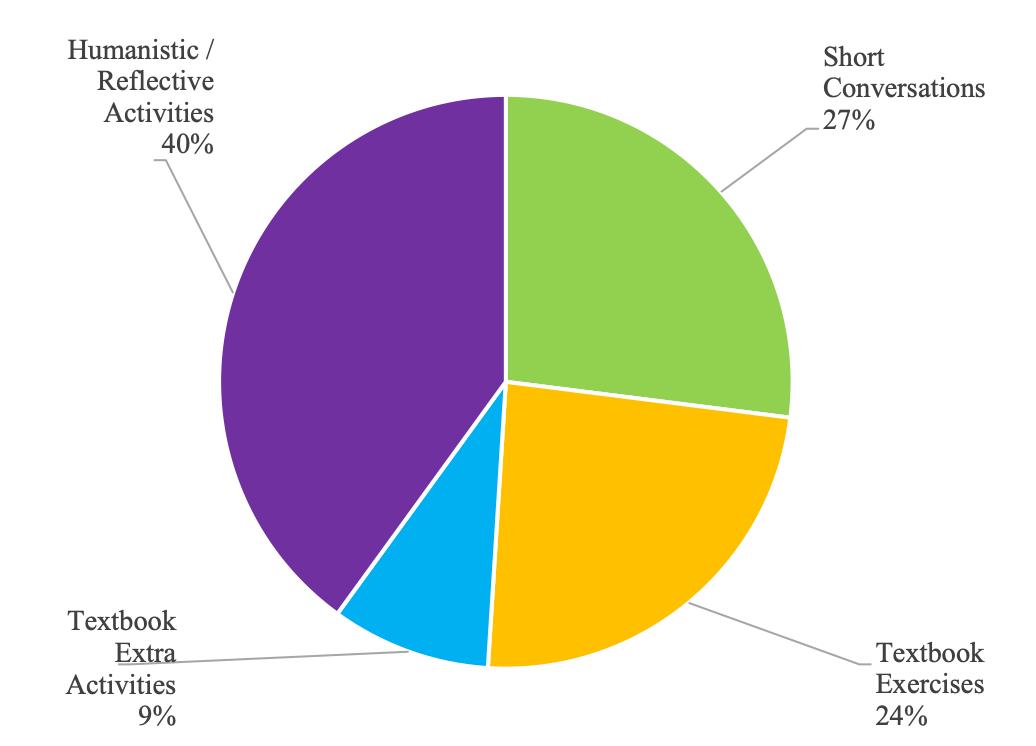
ELT RESEARCH IN ACTION 87
Figure 1. Ratio of emotional reference for each lesson segment
Emotional valence and situated functions
We commonly think of emotions as ‘positive’ or ‘negative’. However, as Oxford and Gkonou (2021) point out, such oversimplification “ignores outcomes for particular people in a range of real contexts” in which “‘positive’ or ‘negative’ emotions might create unexpected results” (p. 53). For instance, disappointment is the most prevalent feeling mentioned by my learners in the context of short conversation sessions. However, their reflections also reveal that in many cases this ‘negative’ feeling constructively intertwines with motivation as communicative interactions allow students to notice a gap in their abilities. Similarly, difficulty experienced during textbook exercises frequently then sets the scene for a sense of progress
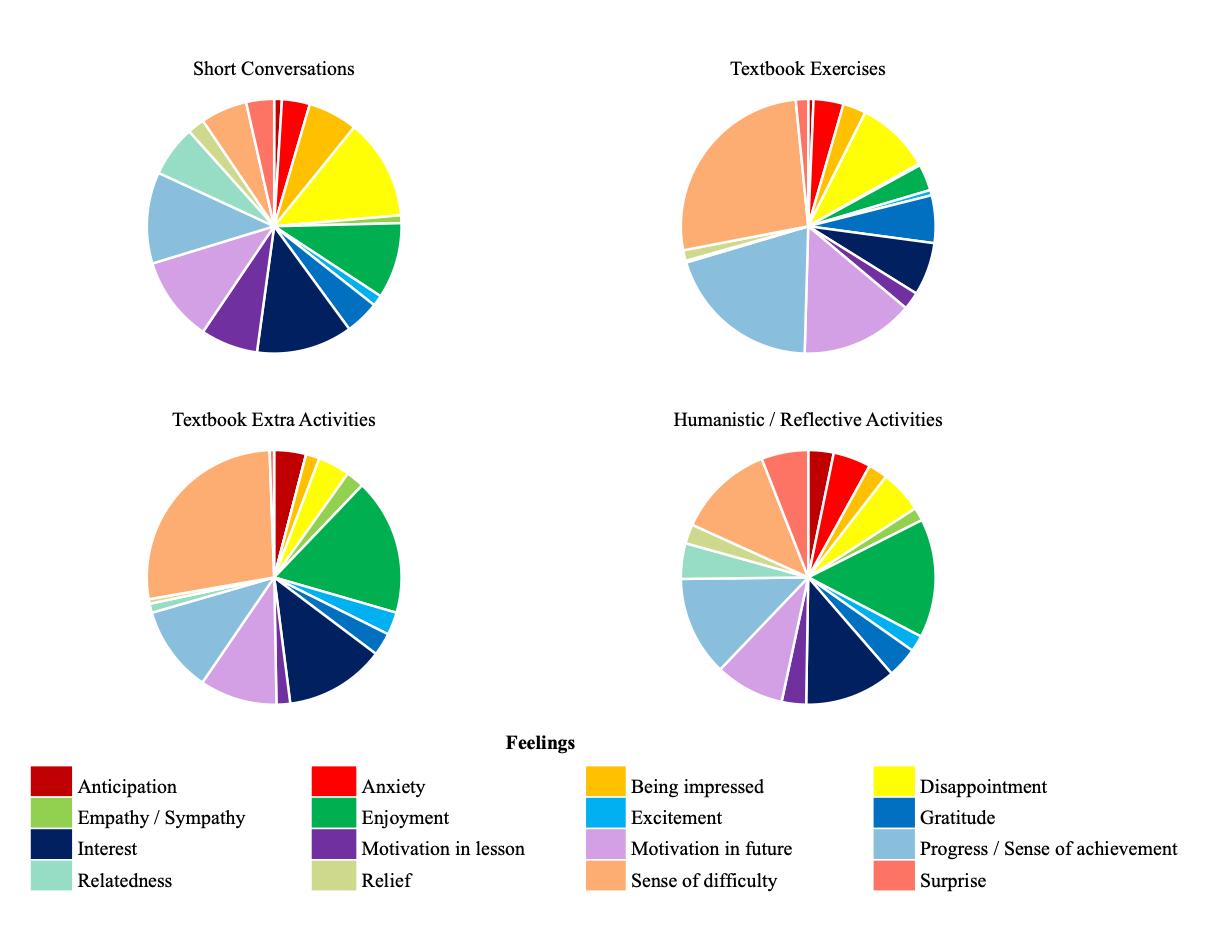
SECTION 3 VIEWS FROM WITHIN 88
Figure 2. Ratios of emotions by lesson segment
and achievement. It would be useful for both teachers, and learners themselves, to understand more about the processes via which emotions function to engender constructive or unconstructive actions and patterns of thinking.
Emotional timescales
There is a lay conception that emotions are fleeting, momentary occurrences. In contrast, my previous research has made initial inroads into considering the timescales across which L+ study emotions emerge and how they may be afforded or constrained in relation with past experiences or future projections (Sampson, 2019). In my listening/speaking lessons, it seems that different segments of lessons elicit different patterns to such timescales (Figure 3). While emotional references to short conversations and humanistic activities span shorter and longer timescales in the past and future, textbook segments display dominance of the present, short timescale of an activity. As previously mentioned, emotions are intricately interwoven with such aspects of cognition as attention, memory encoding, consolidation and retrieval (Shiota & Kalat, 2018). Hence, it would be interesting to explore in greater detail the implications of students’ references to different emotional timescales for the ways in which they attend and form memories of their learning.
ELT RESEARCH IN ACTION 89
Social context and emotions
Language, it goes without saying, is a social tool, and hence much L+ learning is also by definition social. Many of the commonly reported emotions of my students, such as being impressed, gratitude, empathy/sympathy and relatedness directly involve the social. Yet, learners frequently also imply social aspects when referring to other emotions, such as anxiety, enjoyment, interest and surprise. Watching videos of learner groupwork vividly encapsulates the vital emotionality of learning. A final, much-overlooked but
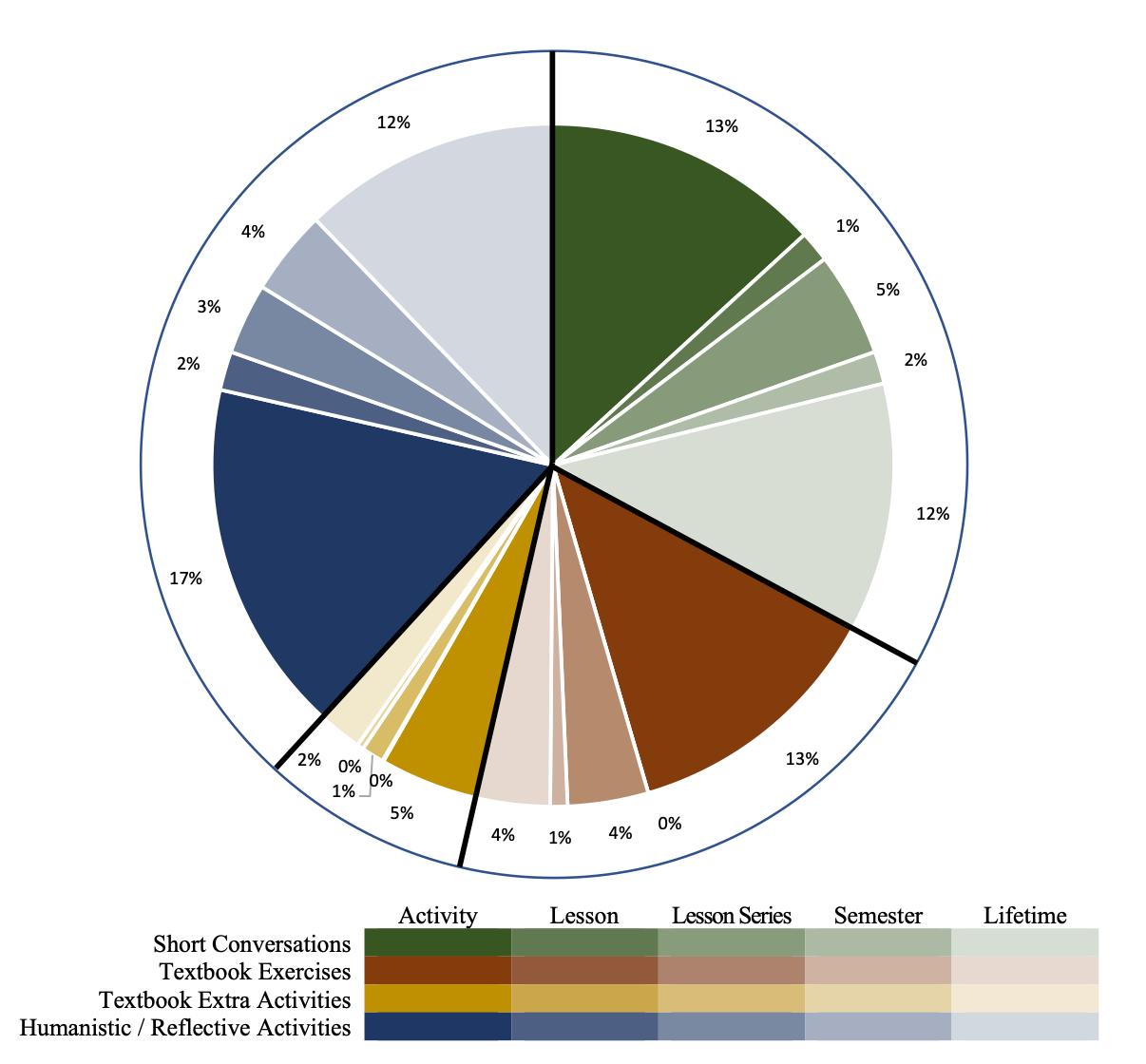
SECTION 3 VIEWS FROM WITHIN 90
Figure 3. Timescales by lesson segment
surely essential direction for empirical work thus revolves around this social context – investigating the emergence of emotions via communicative interactions in the classroom, as well as exploring the functions that such emotions and their display serve (see Sampson, 2022 for some beginnings). More nuanced understandings might also empower further moves towards the beneficial implementation of social-emotional learning in L+ classrooms (e.g., Herrera & Martinez-Alba, 2021).
Conclusion
In this short paper I have set out a range of suggestions for further investigating the emotional dimensions of L+ learning. Although these foci have sprung from the situated context of my own teaching and researching, I have not pointed to particular methods via which they could be explored. Nevertheless, I hope these starting points might spark interest with other practitioner researchers, who may take their own, locally-sensitive approaches in order to add further contextualized understandings of the emotionality of L+ study.
References
Herrera, L. J. P., & Martinez-Alba, G. (2021). Social-emotional learning in the English language classroom: Fostering growth, self-care, and independence. TESOL Press.
Oxford, R. L., & Gkonou, C. (2021). Working with the complexity of language learners’ emotions and emotion regulation strategies. In R. J. Sampson & R. S. Pinner (Eds.), Complexity perspectives on researching language learner and teacher psychology (pp. 52–67). Multilingual Matters.
Sampson, R. J. (2019). Real people with real experiences : The emergence of classroom L2 study feelings over interacting timescales. System , 84, 14–23. https://doi.org/10.1016/j.system.2019.05.001
ELT RESEARCH IN ACTION 91
Sampson, R. J. (2020). The feeling classroom: diversity of feelings in instructed L2 learning. Innovation in Language Learning and Teaching, 14(3), 203–217. https://doi.org/10.1080/175 01229.2018.1553178
Sampson, R. J. (2022). Complexity in second language study emotions: Emergent sensemaking in social context. Routledge. Shiota, M., & Kalat, J. (2018). Emotion (3rd ed.). Oxford University Press.
SECTION 3 VIEWS FROM WITHIN 92
Motivated to Get an “A”
Katherine L. Kiss
Motivated to learn?
Optimal learning is not a guaranteed outcome of teaching. This is particularly so when learning a language: a complex system that cannot be broken down into pieces, phrases and automatic routines. So, when is a learner motivated to do a task whole-heartedly such that optimal learning ensues? Research indicates that motivation is highest and learning optimized when a learner perceives themselves to be: supported by the environment, in control of outcomes, empowered to self-direct (be autonomous)—when they feel less anxious, that the task is worthwhile, that they are competent to do it, and that they are related to others instead of in competition with them (Ambrose et al, 2010; Gagné & Deci, 2014).
But which kind of motivation: “autonomous” or “controlled”? In autonomous motivation, the learner identifies with, or “owns” a goal, and the goal is consistent with his or her beliefs and values. Autonomous motivation is associated with feelings of “relatedness” and a greater sense of competence and autonomy, which leads to improved cooperative learning, more satisfaction, and lowered anxiety (Gagné & Deci, 2014). Learners with high levels of autonomous motivation are more engaged, more creative and achieve more (Chamberlin, Yasué & Chiang, 2018). The stronger the autonomous motivation, the more likely a learner is to take on a task even if it seems challenging.
Controlled motivation, on the other hand, is what we commonly think of as extrinsic motivation in which the learner attributes the reasons for doing a task and its evaluation to forces they cannot control. It also includes motivation to do a task to avoid embarrass-
ELT RESEARCH IN ACTION 93
CHAPTER 11
ment, shame, guilt, or damage to the ego (Gagné & Deci, 2014). It is associated with lowered performance, lowered confidence, feeling less related to others, increased feelings of competition, and a decreased sense of support from the environment, thereby sabotaging conditions for optimal learning.
The kind of motivation that is stimulated is strongly influenced by who assesses students’ work, and how they assess it. A ubiquitous part of most formal education settings (and unlikely to change anytime soon) is the assignment of worth or value to work by a teacher or institution in the form of multi-level grading. Unfortunately, this practice increases controlled motivation, shifts the perceived control of outcomes to an external source, and lowers perceived autonomy (Chamberlin, Yasué & Chiang, 2018; Pulfrey, Buchs and Butera, 2011).
On the other hand, autonomous motivation and student performance are enhanced when assessment takes the form of constructive, formative feedback only. Unfortunately, when grades are combined with formative feedback, what stands out most to students is the grade, thereby undermining the value of the formative feedback, which students often ignore (Pulfrey, Buchs and Butera, 2011).
My project
I can’t count the times a student who earned a low grade for an assignment asked me: “Can I still earn an “A” for the course?” Rarely do I get questions like: “What did I miss? What did I not learn?” How can I improve my learning?” It’s understandable: grades determine practical realities for people: graduating, ego-protection, reimbursement for a course, a pay raise, a promotion, etc. Very often meanings unrelated to learning dominate a learner’s mind.
These various thoughts and questions brought me to this action research project. I was curious to explore how the A-F grading system my university requires could be demotivating students’ investment in their work and sabotaging my objective of creating conditions in which they were focused on learning, could set their own goals, collaborated well, and felt competent to do the tasks required.
SECTION 3 VIEWS FROM WITHIN 94
Taking an idea from Benjamin Zander (Zander & Zander, 2002)
I was curious to see how students’ approach to assignments might change if they knew from day 1 that they’d already earned an “A” for the course, and that I would be providing only regular, formative feedback to support their success? Would they focus on the process? On the learning? How many would take the opportunity to “slack off”? How would such an agreement affect stress levels and feelings of competence?
To participate, graduate students in their early 20’s to mid 40’s wrote me a letter at the beginning of the course that was post-dated for the final day of the semester. In the letter they were to describe who they had become thanks to doing this course, and what they had done during the semester to warrant an “A.” In addition, they agreed to keep a journal of their thoughts and feelings as they worked, and meet all published due dates (or contact me in a timely way if there was a problem). Students were totally free to participate, and to drop out at any point, if they preferred letter grades for each assignment. The curriculum and assignments were the same for all regardless of participation status.
The results were overwhelmingly positive. Eleven of the 13 students enrolled in the course chose to participate (no one dropped out). Everyone shared comments in their journals that referred to one or more of the conditions described in the research for optimal learning. Comparing outcomes with similar students over the seven years I’ve been teaching the same class, I can say that the quality of the work was as good or better. As a bonus, I felt much more connected to each student and their learning by engaging with them about the substance of their work without the stress of also having to quantify their efforts with a grade.
Conclusion
There is no argument that grading has a crucial administrative function. The question to pose is when, how and where are there spaces for us to design procedures and interactions with students
ELT RESEARCH IN ACTION 95
in a way that creates conditions in which learners experience a high degree of autonomous motivation, feel competent, view challenges as learning opportunities, feel connected to others rather than in competition with them (for a grade), identify with task goals consistent with their beliefs and values, know they are supported, and focus on learning for learnings’ sake?
References
Ambrose, S.A., Bridges, M.W., DiPietro, M., Lovett, M.C., & Norman, M.K. (2010). How learning works: Seven research-based principles for smart teaching. Jossey-Bass: A Wiley imprint.
Chamberlin, K., Yasué, M. & Chiang, I-C. A. (2018). The impact of grades on student motivation. Active Learning in Higher Education, 00 (0), 1-16.
DOI: 10.1177/1469787418819728
Gagné, M. & Deci, E.L. (2014). The history of self-determination theory in psychology and management. In M. Gagné (Ed.), The Oxford handbook of work engagement, motivation, and self-determination theory. Oxford University Press. DOI: 10.1093/oxfordhb/9780199794911.001.0001
Pulfrey, C., Buchs, C., & Butera, F. (2011). Why grades engender performance-avoidance goals: The mediating role of autonomous motivation . Journal of Educational Psychology, 103(30), 683–700.
Zander, R.S. & Zander, B. (2002). The art of possibility: Transforming professional and personal life. Penguin Books.
Author note
I have no conflicts of interest to disclose.
Correspondence concerning this article should be addressed to: katherine.kiss@umb.edu
SECTION 3 VIEWS FROM WITHIN 96
Language Teachers’ Perceptions of Classroom Action Research
Stephanie King
Introduction
Sharing one’s work is a daunting prospect but one that is essential to the success of Classroom Action Research (CAR). Therefore, having a ‘safe space’ in which to share this research at the ELTRIA Conference 2022 was the perfect opportunity to begin my journey as a researcher. Research needs to be shared and this is a key feature of CAR. This research coupled with presenting at the conference provides opportunities for reflection, gaining feedback and to review the work of others. This review will summarise the presentation delivered at the ELTRIA Conference and provide a reflection on participating in the conference.
Classroom Action Research is an active process which involves planning, action, evaluation either individually or collaboratively, and through reflection there is understanding and informed action to improve on an element of teaching and learning (Glickman, 1990; Burns & Edwards, 2016).
Aims and Rationale
The aims of this research were to investigate English language teachers’ perceptions of Classroom Action Research (CAR), to evaluate whether Continuing Professional Development (CPD) on CAR had been experienced by language teachers and to explore teachers’ perceptions after they had participated in CAR in their own classrooms. Language teachers in this context refer to teachers of English for Academic Purposes, TEFL/TESOL and ESP teachers.
ELT RESEARCH IN ACTION 97
CHAPTER 12
Methodology
The study adopted a mixed-methods approach and took place in three phases. It involved collating teachers’ perspectives of CAR through a questionnaire (Stage One), interviews (Stage Two) and teachers conducting CAR in the workplace (Stage Three). The focus for the ELTRIA Conference was to highlight Stage Three of the research which was based on the following research question:
What are language teachers’ perceptions of Classroom Action research after participating in Continuing Professional Development on CAR?
Stage Three of the study began with training on how to perform CAR, which was delivered by the researcher. Participants, who were EAP teachers, had a range of experience, but none had conducted CAR before. They taught a range of students from foundation to pre-Masters at an international college. This phase of the data collection took approximately six months and involved initial training on CAR, focus group interviews during the process, individual interviews after completion of CAR. In addition, participants were encouraged to keep a reflective diary in which they logged their thoughts, feeling and notes on the CAR process.
CPD on CAR
To understand the CAR process, active training on CAR was delivered. This involved reviewing the characteristics of CAR, deciding on an area to research and developing a research question.
The CAR Process
Once an area for CAR has been decided, a research question was posed. For example: How can I ensure students use feedback effectively? Participants collected data such as test scores and students’ understanding of feedback. Participants then did research to look at solutions for the problem and then planned their lesson accord-
SECTION 3 VIEWS FROM WITHIN 98
ingly. The process of planning, acting, observing and then reflecting would follow. After reflection on the first cycle, the next cycle would then ensue, which involved adapting activities and teaching strategies to address the new situation. This process is cyclical and can be repeated and refined.
Focus Group Meetings and Interviews
Through Stage Three of the study participants attended focus group meetings. The first focus group involved sharing their initial ideas and research questions. The second focus group aimed to review the data collection and research phase to inform planning. At this point, some participants had already acted on their data collection and research and reflected on the result in preparation for a second cycle. The final focus group reflected on the process and provided participants opportunities to share their experiences, successes and concerns. At the end of Stage Three all participants attended an individual interview and this stage of the data collection process.
Reflective Diaries
Through the Classroom Action research phase, participants were required to keep a reflective diary. Participants were free to make this entry in any format they felt comfortable. However, the focus of the entries should be on their thoughts and feelings throughout the process.
Initial Findings
Some of the findings derived from the initial analysis included the following key points:
• The CAR process is very insightful
• Participants valued the opportunity to target issues within their own classrooms
• Participants were doing CAR already – but it was not formalised
ELT RESEARCH IN ACTION 99
• Collaboration was valued highly
• Participants (teachers) were very self-critical
• Diary entries were more descriptive than emotive which did not fully highlight perceptions
• Teachers’ participation in CAR is more successful with institutional support
Insider research is valuable but conflict between being a manager and researcher must be acknowledged.
Reflection on the ELTRIA Conference
The basis of Classroom Action Research revolves around teachers reflecting on their performance and classroom practices and providing a safe space in which they can feel free to communicate their ideas, concerns and successes was paramount to this research. Language teachers especially become very attached to their students and want them to succeed. The same thoughts and feelings can be mirrored when conducting research. It becomes a personal journey and angst encroaches knowing your work will be scrutinised and exposed. From the beginning, the conference organisers were approachable and extremely helpful.
The range of presentations and workshops was diverse and highly informative. Going through this process made me a better researcher, presenter and made me feel my work was valued and I valued the work of others in return. Not to mention the formidable guest speakers and meeting those you revere in the research world!
This is a conference must for researchers regardless of experience and one which will leave a lasting impression. I will surely apply for the next one!
SECTION 3 VIEWS FROM WITHIN 100
References
Burns, A., and Edwards, E. (2016) Language teacher action research: achieving sustainability. English Language Teaching Journal 70, 1: 6-15.
Glickman. C.D. (1990). Supervision of instruction: A developmental approach. Boston, MA: Allyn Bacon
Kemmis, S., & McTaggart, R. (Eds) (1988) The action research planner (3rd ed.) Geelong, Victoria: Deakin University Press
ELT RESEARCH IN ACTION 101
CHAPTER 13
Teachers’ beliefs about CLIL limitations: a case of one Catalan secondary school
Anastasia Lovtskaya
Introduction
Studies investigating Content & Language Integrated Learning (CLIL) teacher perceptions show that although teachers mostly see the utility of CLIL for their students, they are often unhappy about the outcomes. “CLIL may work” under certain conditions or in different settings both for them and their students (Hofstadler et al., 2020). As part of my doctoral research project on secondary CLIL teachers’ wellbeing, I interviewed several CLIL teachers working in a secondary school in the Barcelona metropolitan area about their perceptions of CLIL, their roles within this pedagogical approach and its limitations, over two school years (2020/2021 and 2021/2022). While the way CLIL is implemented in Catalonia varies from school to school (see Lorenzo Galés & Piquer Vives, 2013), and the interviewed teachers worked in projects that employ different CLIL modalities, I identified certain recurrent patterns which I grouped into two themes:
(1) CLIL, language and content learning and
(2) CLIL and professional identity.
Theme 1: CLIL, language and content learning
Based on their own teaching experience, teachers who took part in this research believed that CLIL may be detrimental for the content learning. Why? They felt that only limited content could be taught and learnt due to students’ (and, in some cases, teachers’) insufficient levels of the target foreign language and motivation to learn in that language. They also reported that CLIL required specific ad-
ELT RESEARCH IN ACTION 103
aptations in the assessment materials used in the end-of-term and final assessment, both content and language-wise. Overall, teachers observed that CLIL “may work” and the content learning may be improved if “CLIL is done properly”. Among possible solutions, they mentioned the following:
1. Teachers should have access to specific CLIL materials and adapted curricula.
2. There should be clear official minimum language level requirements for both teachers and students.
3. Teachers should be offered specific hands-on training activities to raise their awareness of the role of disciplinary literacies ( for foreign language teachers) and language in discourse and across curriculum ( for content teachers).
Previous studies on student performance in CLIL reveal that, on the one hand, students develop language skills and improve overall performance in the target language (Lasagabaster, 2011), while experiencing less language anxiety (Ohlberger & Wegner, 2019). On the other hand, students’ content learning gains are overall smaller (Piesche et al., 2016). However, the latter may depend on a range of factors not directly related to the CLIL modality (Dallinger et al., 2018), such as a general lack of interest in the subject. Some of the interviewed CLIL teachers also reported lower content achievement in CLIL classes in comparison to non-CLIL classes they taught, however admitting that they were unsure whether this was solely due to CLIL or other factors.
Theme 2: CLIL and professional identity
Some of the interviewed CLIL teachers expressed doubts about CLIL as an approach as the roles they had to adopt and functions they had to perform conflicted with how they identified themselves professionally. Moreover, they claim that having to teach using CLIL
SECTION 3 VIEWS FROM WITHIN 104
approach affected their overall wellbeing. I will provide two examples of CLIL teachers, Silvia and Ricard, who identify themselves as language and content teachers respectively. Both teachers worked at the same high-complexity state secondary school in a town in Barcelona’s industrial belt, and were interviewed twice, during the last term of 2020/2021 (first interview) and 2021/2022 (second interview) school years. They were both new to CLIL and formed part of the same team implementing CLIL in Science classes.
Due to the school’s attempt to follow the post-pandemic recommendations, during the first school year, all the groups were split into two with a reduced number of students per group, which meant that CLIL teachers, who originally were supposed to focus on either content or language aspects in their classes depending on their role, were asked to adopt the roles of both content and language teachers. During the second school year, the classes had been reorganised and language teachers were allowed to focus on disciplinary literacy in English rather than on the content itself. The content was now taught only by teachers with a background in Science.
During her first interview, Silvia, the language teacher, explained that she had been forced to adopt a role that she was not comfortable with. She was concerned about her own competence in teaching content and felt like her students did not “trust her” as she was not a specialist in the subject and that they were “missing opportunities”. This made her very dissatisfied with her job. She felt that her students would have been better off by learning “just English” and “just Science” as two separate subjects. In her second interview the following school year, Silvia explained that she felt less anxious and more satisfied with herself and the job as content teaching was no longer her responsibility and she could “do her job” as a language teacher.
When interviewed for the first time, her colleague Ricard, the content teacher, attributed his lack of satisfaction with CLIL classes to the CLIL modality itself. Just like Silvia, Ricard believed that CLIL, or the way it was done at his school, was “limiting” for his students, both in terms of content and foreign language learning. His
ELT RESEARCH IN ACTION 105
students, Ricard insisted, were not benefiting from CLIL classes as much as they would have from non-CLIL classes. He believed that his main goal was to teach Science and that English was a burden, which he tried to overcome by translanguaging and even directly translating when he felt it was necessary.
During the second interview, Ricard’s perception did not seem to have changed significantly. While he did admit to feeling less frustrated, for him, it was due to the organisational changes and to the fact that he “got used to” teaching CLIL.
Conclusion
Summing up, from teachers’ perspectives, the topic of possible CLIL limitations is complex and multi-faceted. It goes beyond student performance in CLIL classrooms and includes diverse factors that contribute to teachers’ wellbeing, professional identity crisis being part of it. This crisis has an impact on their wellbeing as they find themselves at conflict with what they are required to do, feel unprepared for their new role as a CLIL teacher, and generally experience low levels of job satisfaction.
This study is limited to one school in Catalonia, so the obtained findings cannot be generalised. This implies further research which should involve a wide range of Catalan schools at different stages of development of their CLIL programmes and which adopt different CLIL approaches and methodologies. Such research should aim to not only provide a set of recommendations to improve teacher wellbeing, but also suggestions on how to increase CLIL efficacy. At this point, there is an urgent need for a specific CLIL module in teacher education pre-service programmes (both for content and language teachers), taking into consideration specific concerns identified by in-service CLIL teachers.
This study forms part of the PhD dissertation supervised by Dr Marilisa Birello and Dr Natalia Evnitskaya.
SECTION 3 VIEWS FROM WITHIN 106
References
Dallinger, S., Jonkmann, K., & Hollm, J. (2018). Selectivity of content and language integrated learning programmes in German secondary schools. International Journal of Bilingual Education and Bilingualism, 21(1), 93–104. https://doi.org/10.1080 /13670050.2015.1130015
Hofstadler, N., Babic, S., Lämmerer, A., Mercer, S., & Oberdorfer, P. (2020). The ecology of CLIL teachers in Austria – an ecological perspective on CLIL teachers’ wellbeing. Innovation in Language Learning and Teaching, 0 (0), 1–15. https://doi.org/ 10.1080/17501229.2020.1739050
Lasagabaster, D. (2011). English achievement and student motivation in CLIL and EFL settings. Innovation in Language Learning and Teaching, 5(1), 3–18. https://doi.org/10.1080/17501229.201 0.519030
Lorenzo Galés, M. N., & Piquer Vives, I. (2013). Report and evaluation of the development of CLIL Programmes in Catalonia Introduction: from Catalan immersion to foreign language CLIL. Temps d’Educació, 45(February 2015), 143–180.
Ohlberger, S., & Wegner, C. (2019). CLIL modules and their affective impact on students with high English anxiety and low self-efficacy. Apples - Journal of Applied Language Studies, 13(3), 1–15.
https://doi.org/10.17011/apples/urn.201906253409
Piesche, N., Jonkmann, K., Fiege, C., & Keßler, J. U. (2016). CLIL for all? A randomised controlled field experiment with sixth-grade students on the effects of content and language integrated science learning. Learning and Instruction, 44, 108–116.
https://doi.org/10.1016/j.learninstruc.2016.04.001
ELT RESEARCH IN ACTION 107
Positioning language teachers’ professional knowledge in participatory research: Reflections from the front
Diane Potts
Introduction
Within and beyond language education, there is resurgent interest in research methods that engage teachers not only as the subjects, informants and users of research, but as partners whose knowledge and experience are integral at every stage of developing the research project. An array of participatory research methodologies, including design-based research (Design-Based Research Collective, 2003), community design-based research (Bang, Faber, Gourneau, Marin & Soto, 2016) and social design experiments (Gutiérrez & Jurow, 2016), are explicit in their intention to: a) rebalance the power relations of researcher-subject; b) enhance the ecological validity of practice-oriented research; and c) more effectively bridge the research-classroom gap. However, as someone who has engaged in participatory methods with teachers and children for more than twenty years, I wonder if attention to methods is enough for us to achieve these aims.
More than methods, the fundamental challenge in participatory research designs is that language teachers and language education researchers speak different languages. The most obvious contrast is between teachers’ focus on their students, their classrooms and the possibilities and constraints of their settings, and academics’ focus on concepts, dynamics, and the possibilities and limitations of their research findings. Teachers ask what they can or should do, researchers discuss implications. But as challenging as these differ-
ELT RESEARCH IN ACTION 109
CHAPTER 14
ences may be, translating tacit understandings of classroom practice into knowledge that can be shared, evaluated and mobilized is more difficult. In participatory research projects, that work of translating embodied, multimodal ensembles of practice into other forms of knowledge inevitably falls on the shoulders of teachers. Let me illustrate using two examples.
Even master teachers find it difficult to explain their practices in ways that can be understood by people who don’t know their classrooms. Outstanding educators were at the heart of The Multiliteracy Project , which at its launch in 2003 had received one of the largest research grants in language and literacy education in Canadian history. The research partners in Vancouver, which included the Vancouver School Board, British Columbia teachers’ unions and researchers at The University of British Columbia, offered teachers $100.00 CDN and researcher support to explore a question of the teacher’s choice. The question needed to fit within the project’s focus on multilingual, multimodal pedagogies and teachers needed to write a 1-page proposal explaining their project. More than 80 proposals were received and approved: these teachers were interested in research.
I had the honour of working and co-authoring case studies with a number of these educators. In a school district of approximately 50,000 students who spoke more than 100 home languages, these innovative teachers were and are recognized by peers for their effectiveness, rigour and creativity in highly diverse classrooms. At national conferences, teachers and academics shared the stage. At international conferences, Vancouver academics alongside the likes of Jim Cummins and Gunther Kress explained that what these teachers were doing went beyond current theory. Again and again, we had to emphasize that teachers were pushing theory and not vice versa.
But it was a struggle to find language for these explanations. I spent hours with these talented individuals at the end of school days, on weekends, in coffee shops and in classrooms, asking questions, probing for clarification, pushing for explanations. There
SECTION 3 VIEWS FROM WITHIN 110
were tears of frustration, but no one wanted to stop. These wellread, articulate educators struggled to explain the complexity of their designs and their thinking, but they wanted to share. Academics have paid time to wrestle with putting ideas to paper, but these efforts occur on the margins of a teacher’s day.
The struggle is no easier for experienced educators pursuing research degrees. Working with PhD students at Lancaster University, I have seen similar issues emerge but from a different angle. My current PhD students are located in Austria, Cyprus, Japan, Poland, Saudi Arabia and The United States and my Lancaster-based students are from China and Ireland. Several have used participatory methods in their thesis projects, often starting their exploration in their classrooms before extending the work. Reading research and exploring ideas is exciting, bringing ideas to bear in a classroom much more difficult. It is all too easy to default to past practice, which may not align with what students have read. At this point in time, all my PhD students have experienced a moment in which they have realized that their past practice is not as effective as they might have supposed. Mistakes are integral to learning and there is no shame in discovering that past practice needs revisiting. However, those moments of discovery are not easy, nor are they easy to put in words.
Both examples highlight that it takes work to make the tacit explicit. Teachers’ knowledge is simultaneously sophisticated and open to question, but what we can learn from teachers requires framing that knowledge in ways that can be understood by people outside their immediate context. Much of the contribution of participatory methods relies less on methods and more on supportive, challenging, sometimes unyielding relationships that develop within the context of the research teams where teachers’ knowledge is first mobilized.
That is a travesty. In the scenarios I have described, teachers and research students depend on academics to create opportunities for unlocking what they know. This dependency reinforces existing pow-
ELT RESEARCH IN ACTION 111
er imbalances and limits progress in language education. Yet there are no simple solutions. Engaging pre-service language teachers in reading and critiquing empirical studies is one piece of the puzzle because it prepares them for a broader range of professional settings. But the continuing need, and what I am currently exploring with academics in Design Studies, primary school Heads and teachers, and university schools outreach staff, is how to frame our engagement with schools and language learners so that academics take on a more equitable share of the language work. That includes changing how initial research questions are posed and refined. We need to capture more of what language teachers know and that requires rethinking how language works in our research relationships.
References
Bang, M., Faber, L., Gurneau, J., Marin, A., & Soto, C. (2016). Community-based design research: Learning across generations and strategic transformations of institutional relations toward axiological innovations. Mind, Culture, and Activity, 23(1), 28-41. 10.1080/10749039.2015.1087572
Design-Based Research Collective, 2003. Design-based research: An emerging paradigm for educational inquiry. Educational Researcher, 32(1), 5-8. https://www.jstor.org/stable/3699927
Gutiérrez, K.D. and Jurow, A.S., 2016. Social design experiments: Toward equity by design. Journal of the Learning Sciences, 25(4), 565-598. https://doi.org/10.1080/10508406.2016.1204548
SECTION 3 VIEWS FROM WITHIN 112
SECTION
3
VIEWS FROM
WITHIN ELT RESEARCH IN ACTION: Working
together towards shared goals
This book is based on the third ELT Research in Action Conference (ELTRIA). Organised by the Escola d’Idiomes Moderns (School of Modern Languages) at the University of Barcelona, the conference took place online on the 22-23 April, 2022 and included talks and plenaries from presenters from a diverse range of geographical locations and teaching contexts. One of the principal aims of the ELTRIA conference is to provide an opportunity for researchers and practitioners to come together to share experiences and common goals.
This volume is a collection of chapters which summarise and reflect on a selection of the ELTRIA presentations. Divided into three sections, the chapters examine diverse areas of L2 classroom practice from differing viewpoints: the learners’ perspective, the teachers’ perspective and how the group as a whole perceive the experiences. This collection explores current practice by means of practitioner-led classroom research and discusses topical themes of interest to ELT professionals at a grassroots level. The book is relevant to teachers and researchers alike and hopes to contribute to the increasing collaboration and alignment of the researcher, practitioner and learner communities in pursuit of common goals: improving and enhancing the L2 classroom learning experience.








































